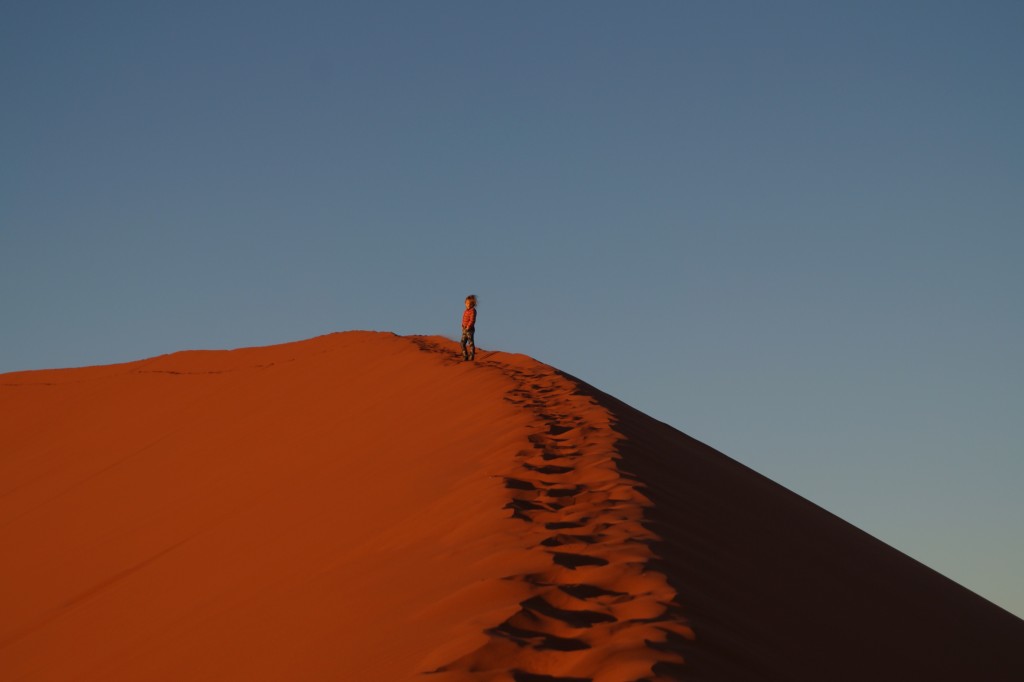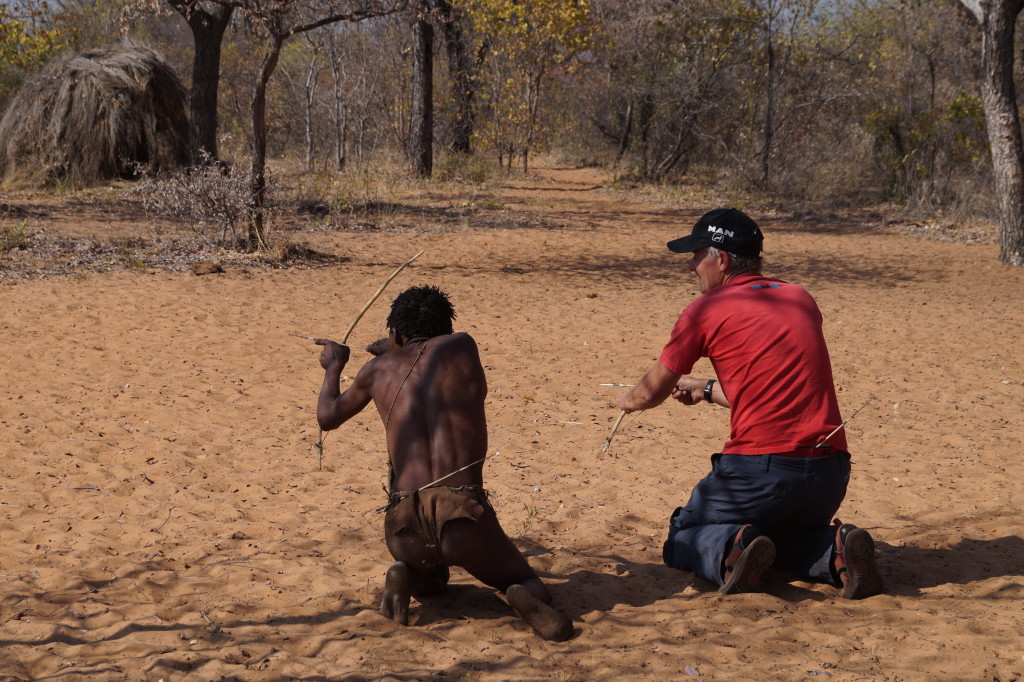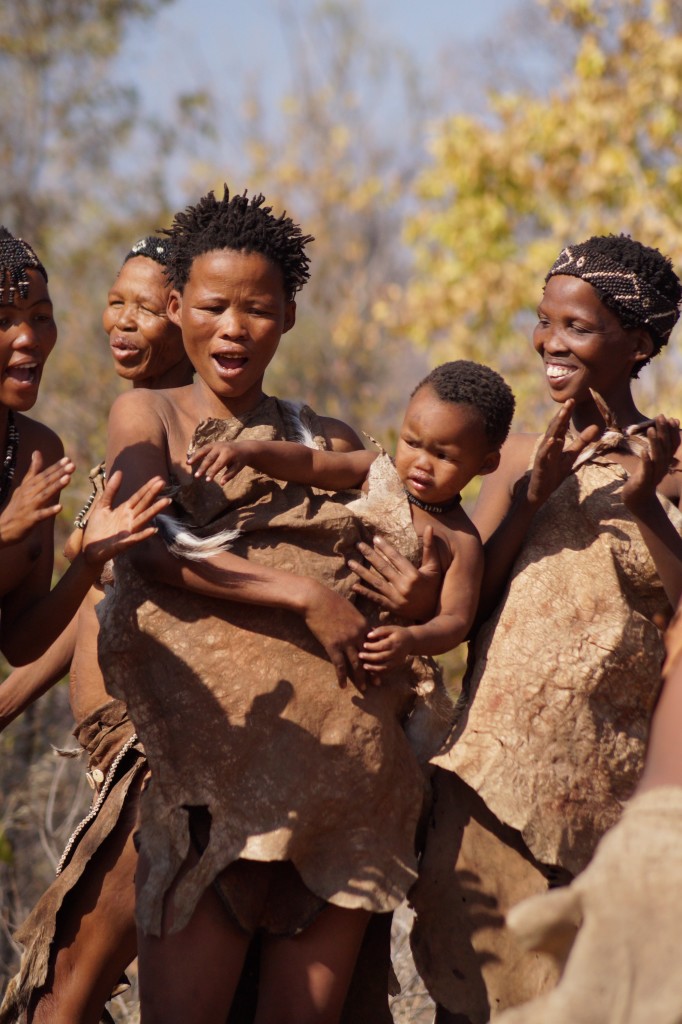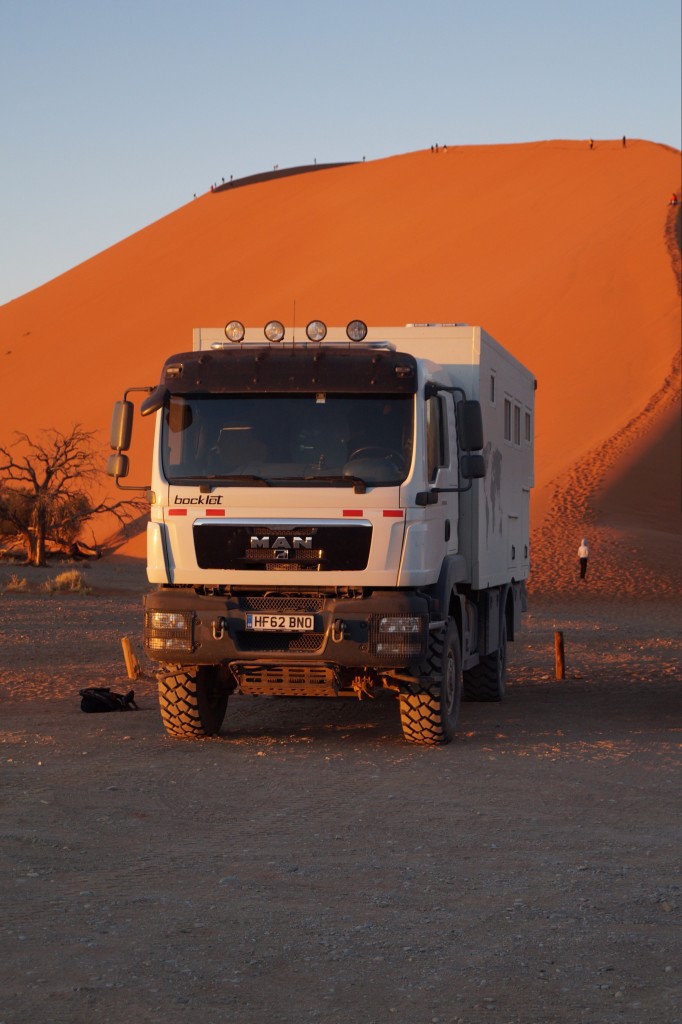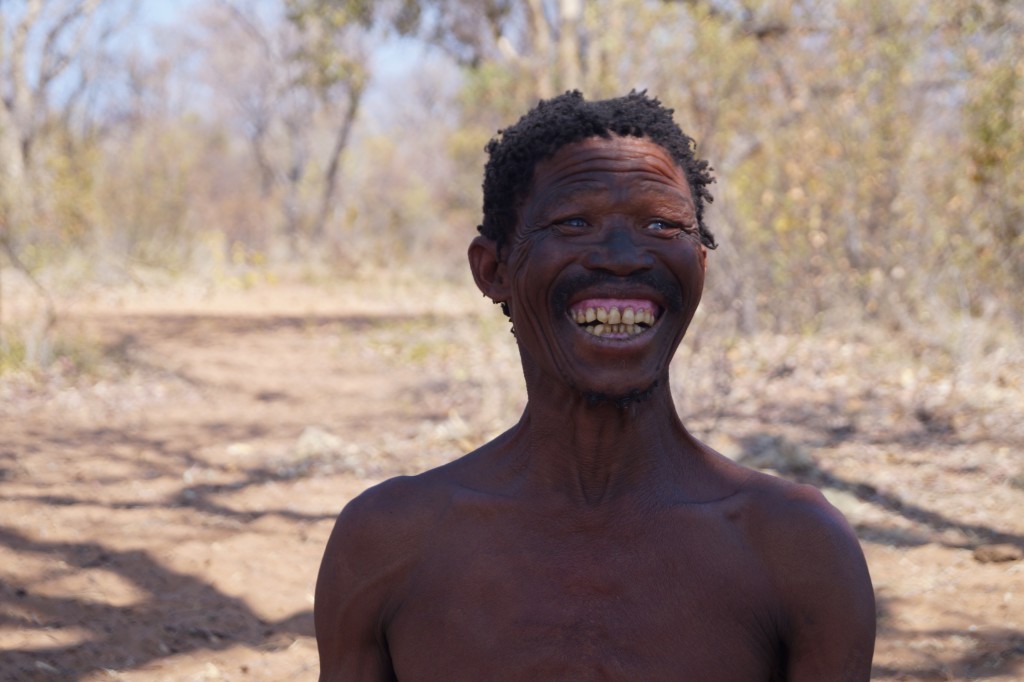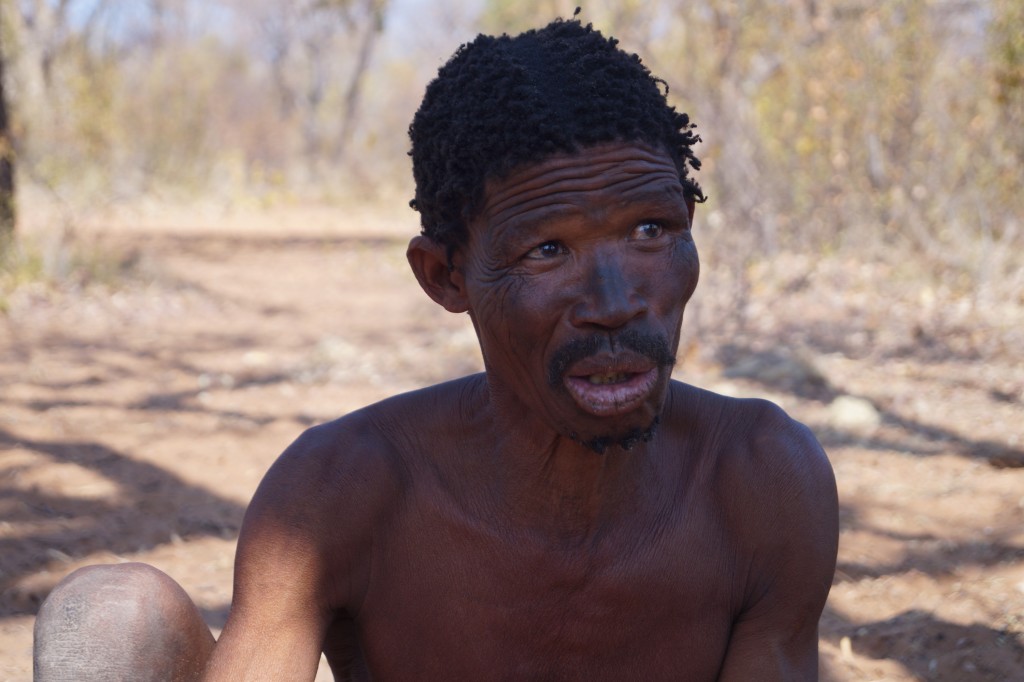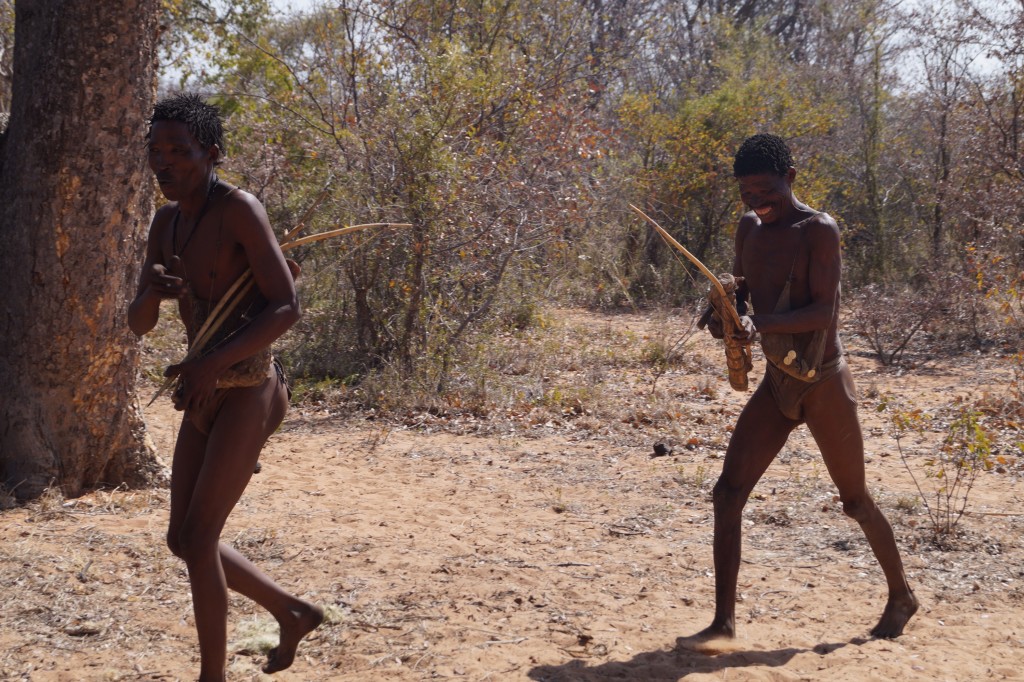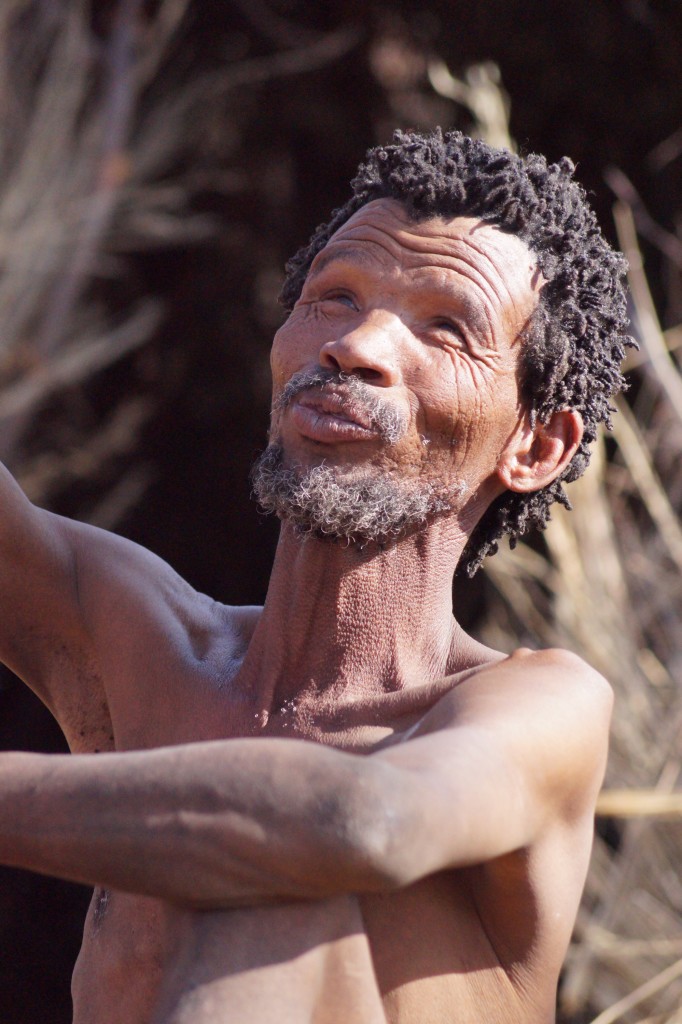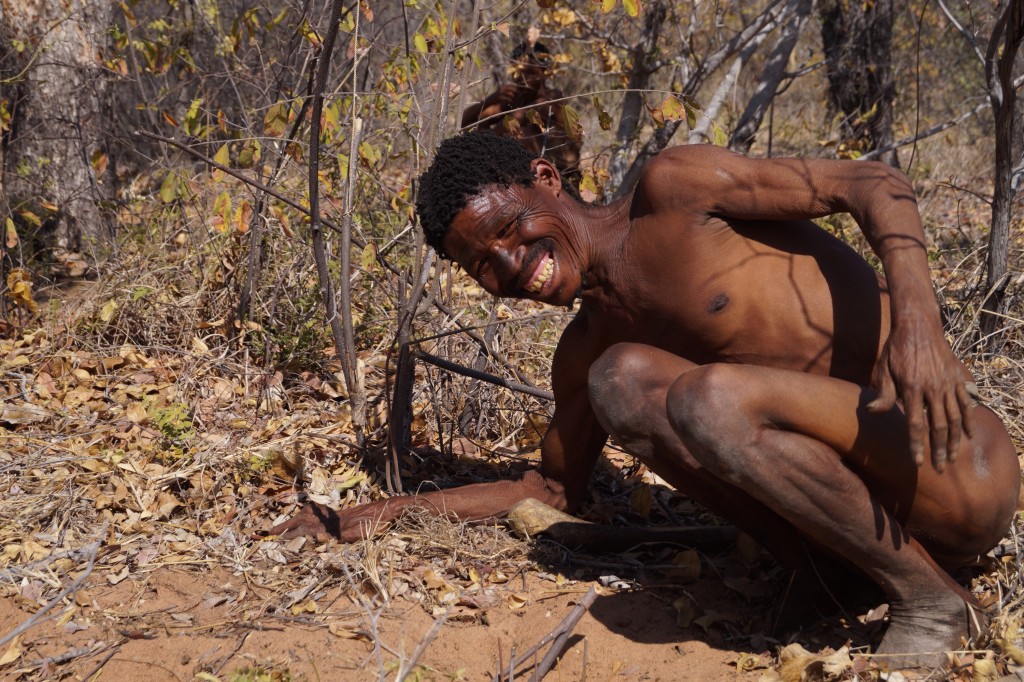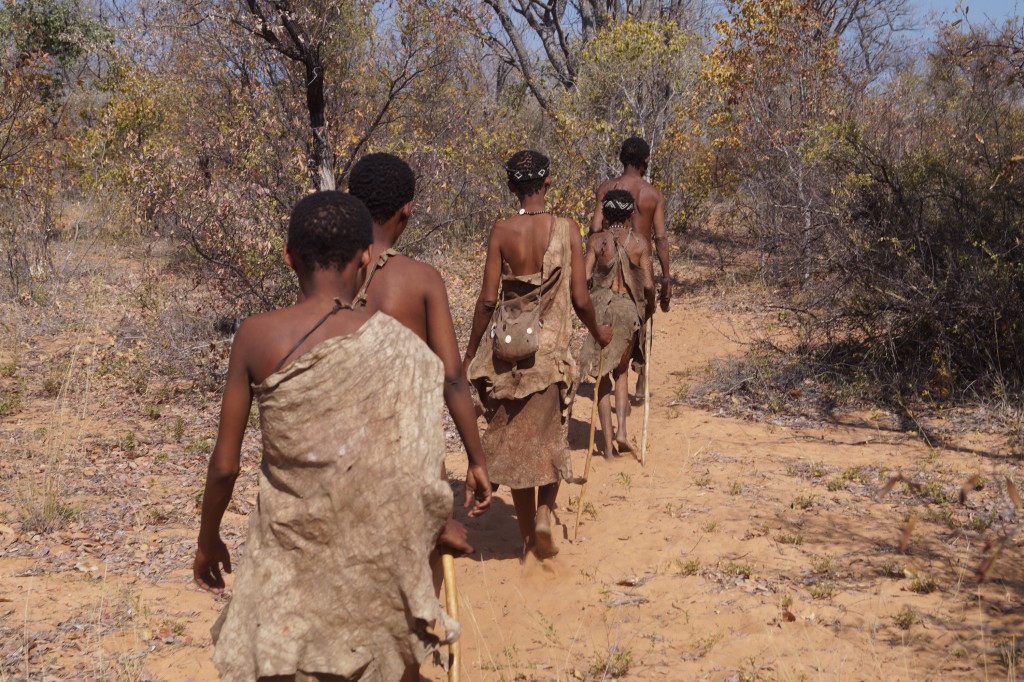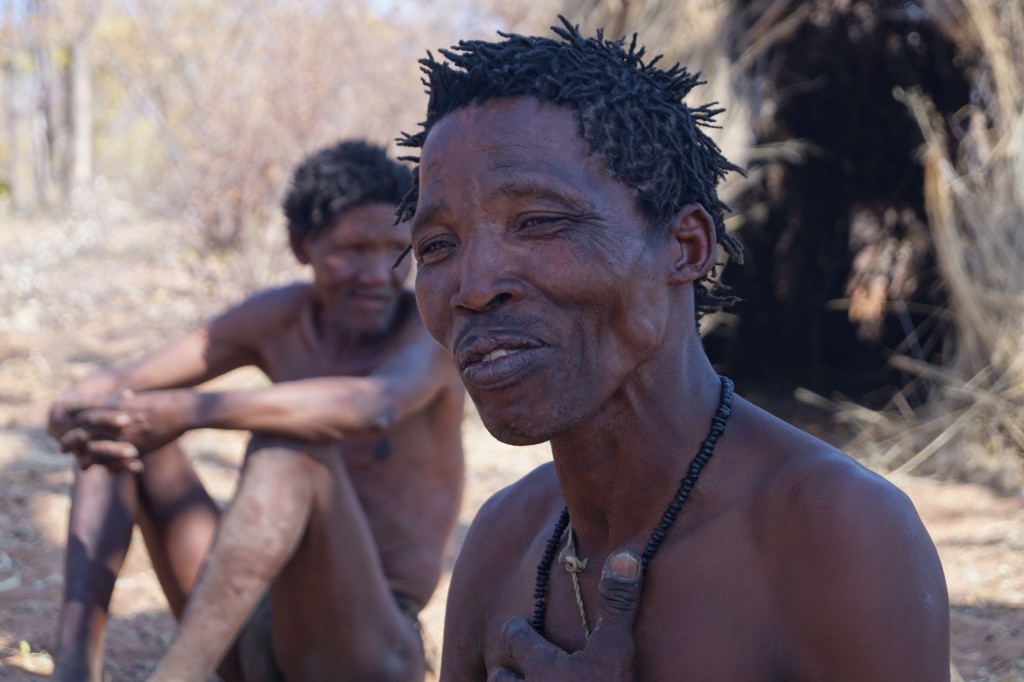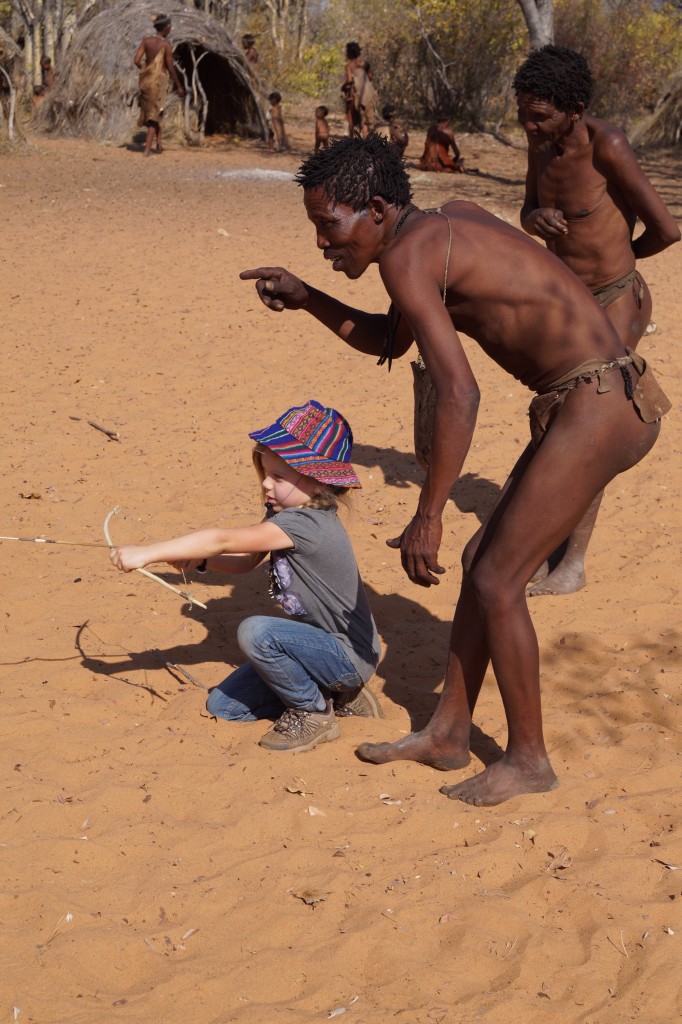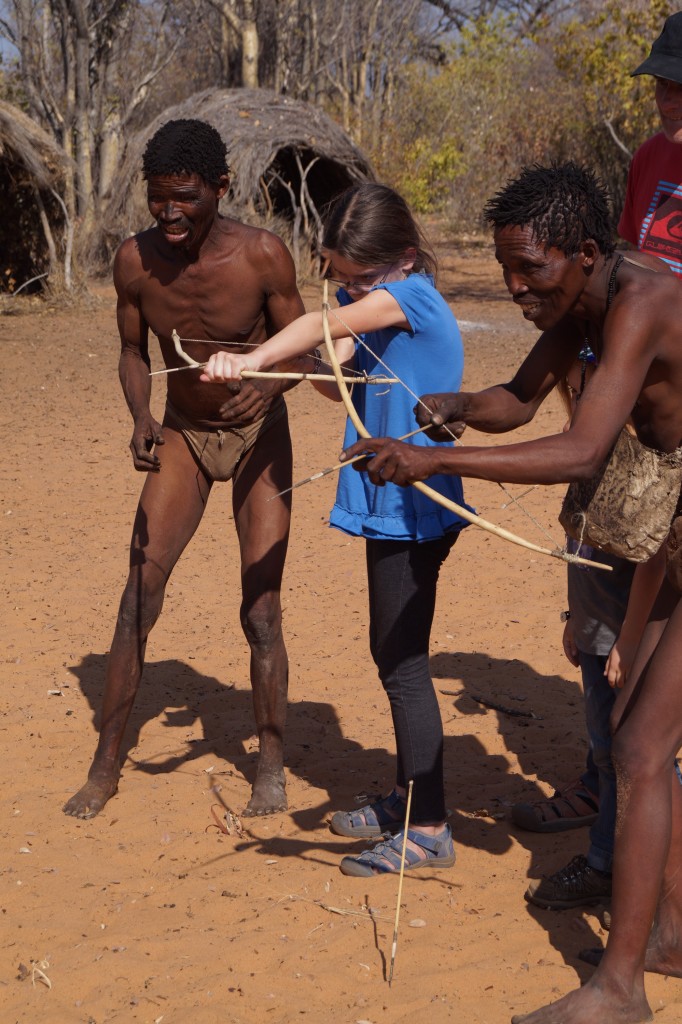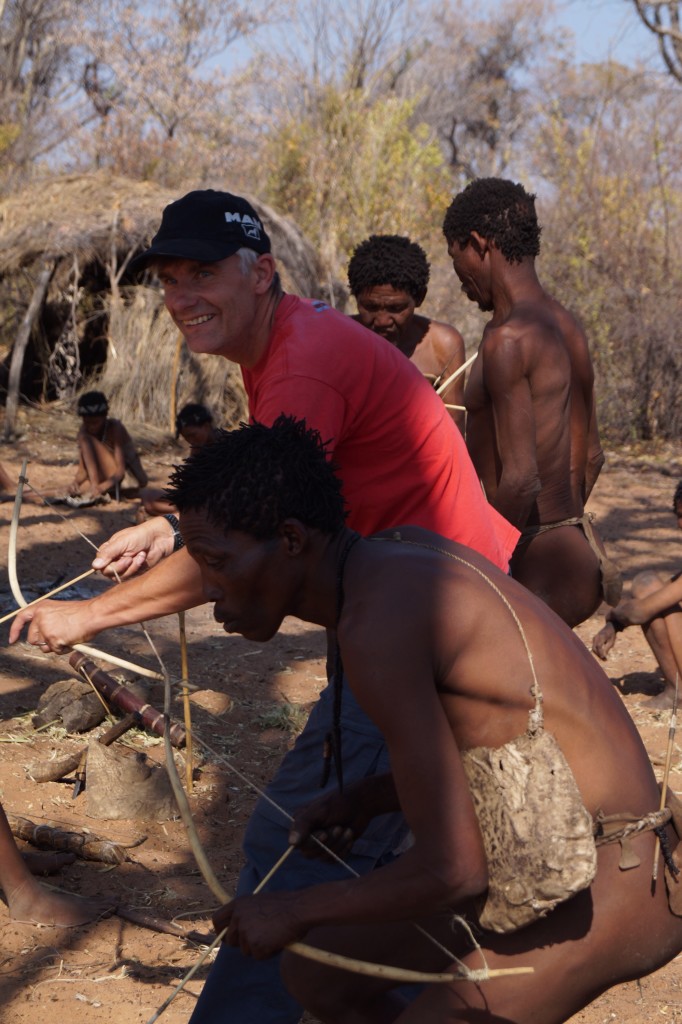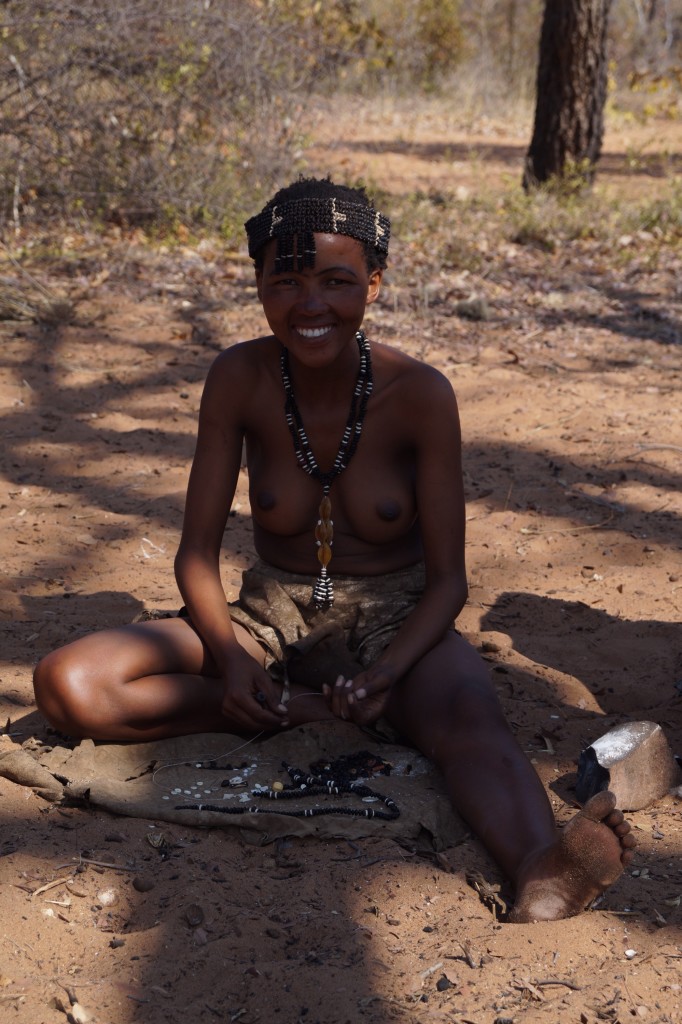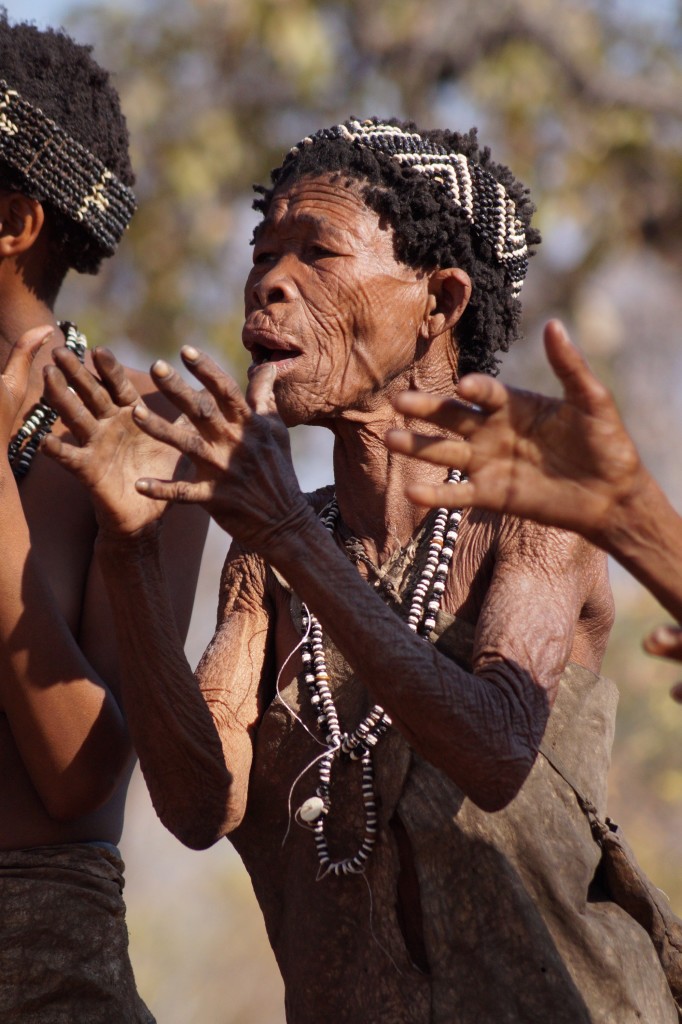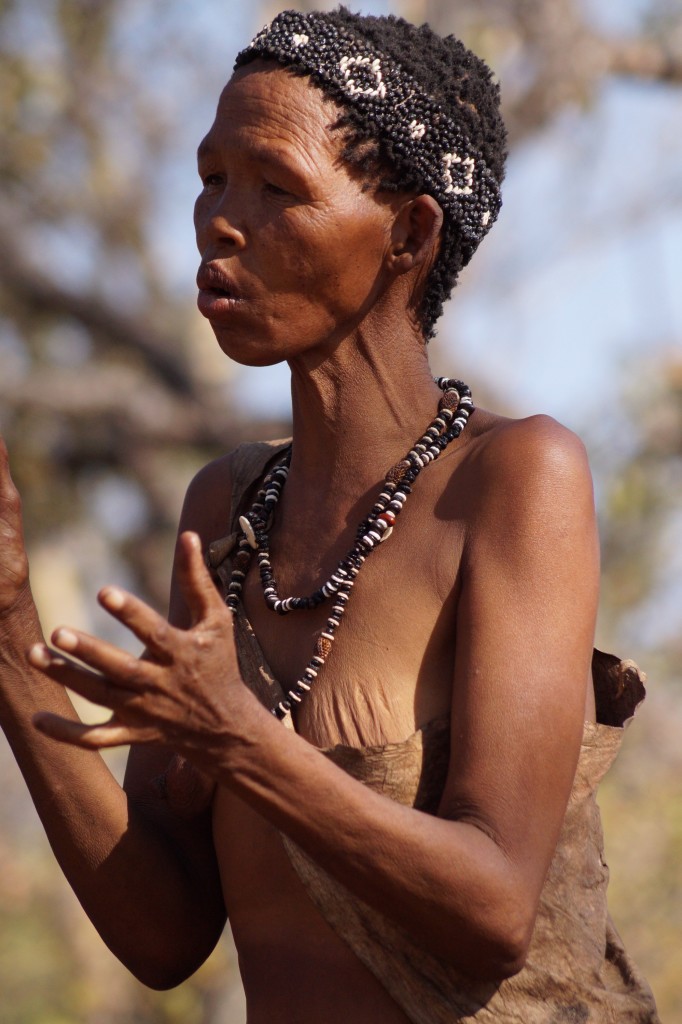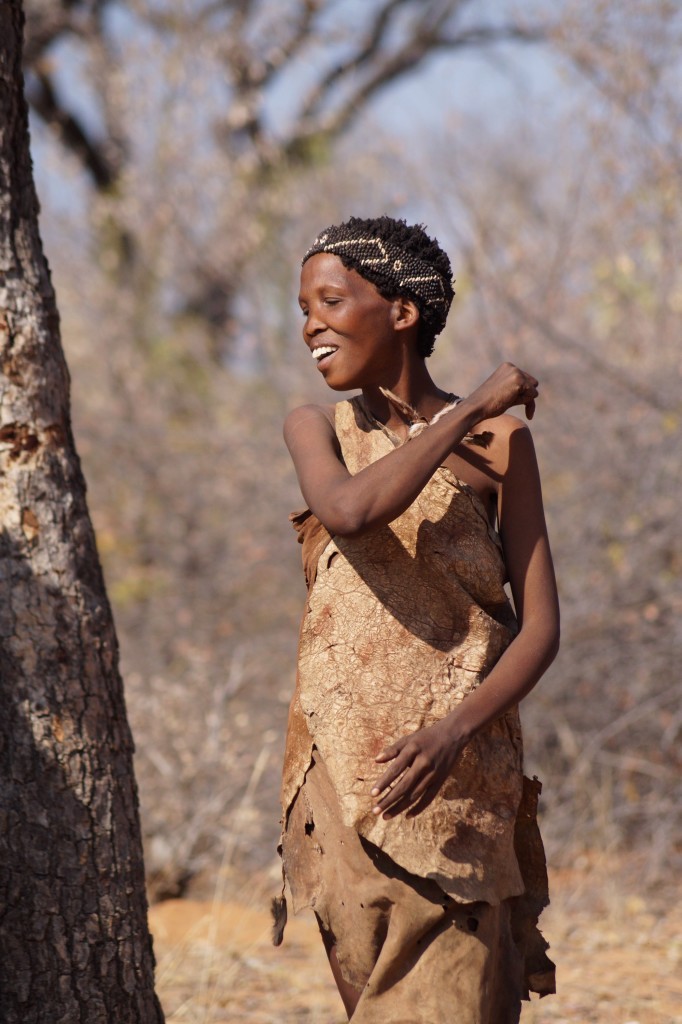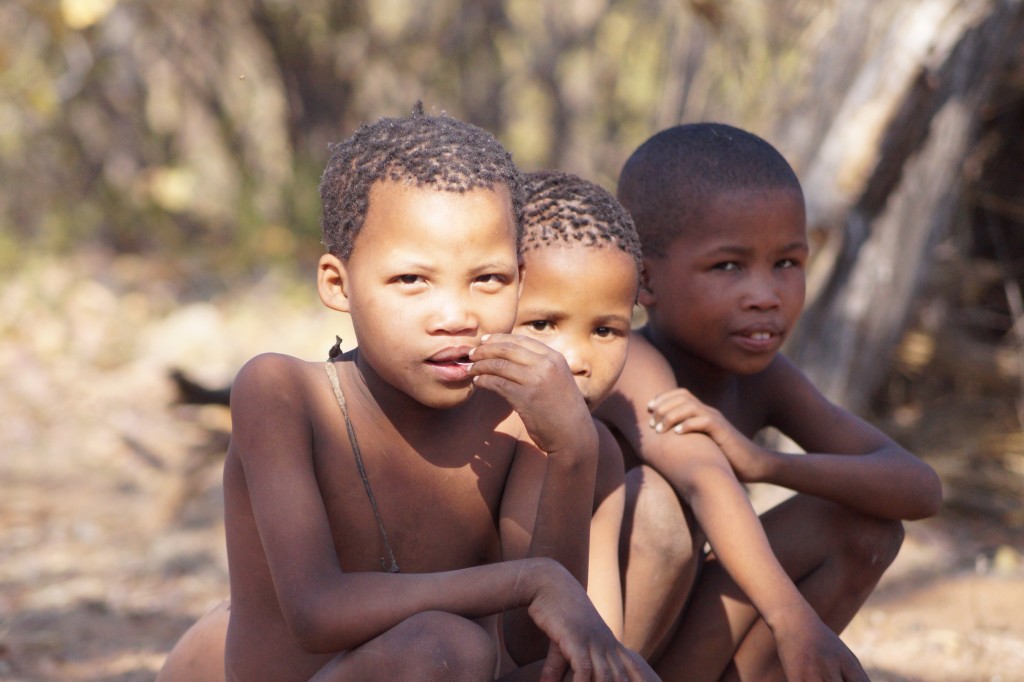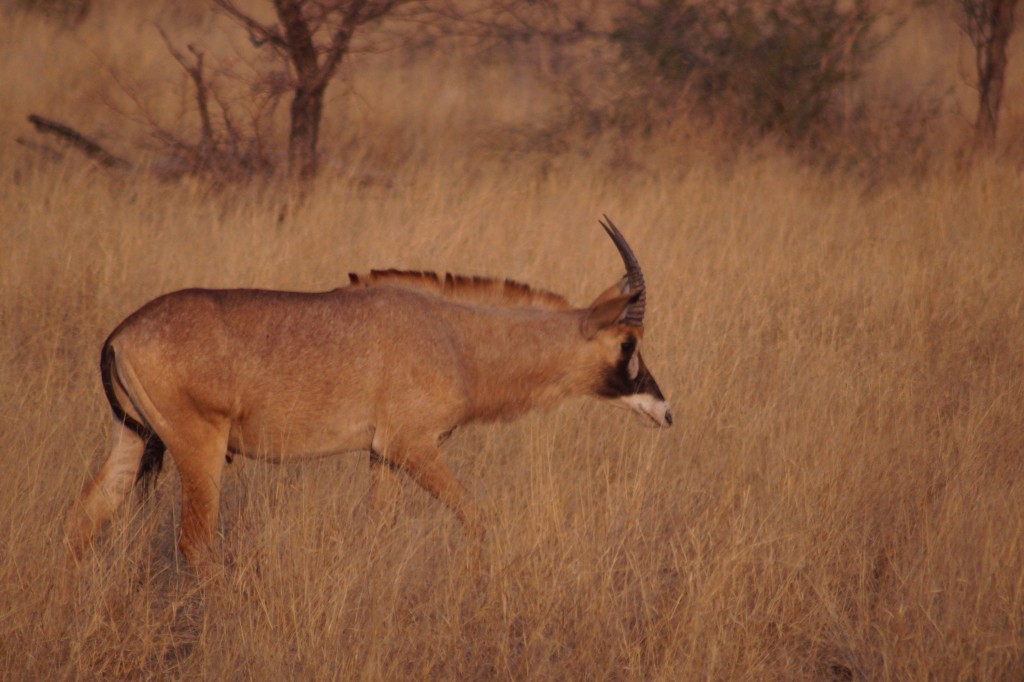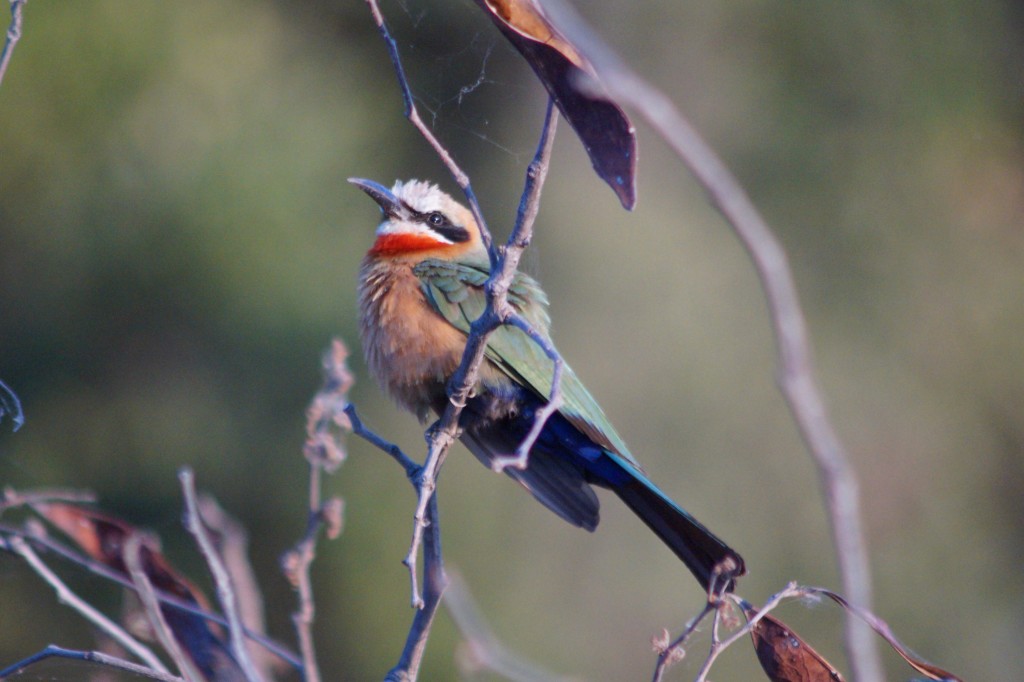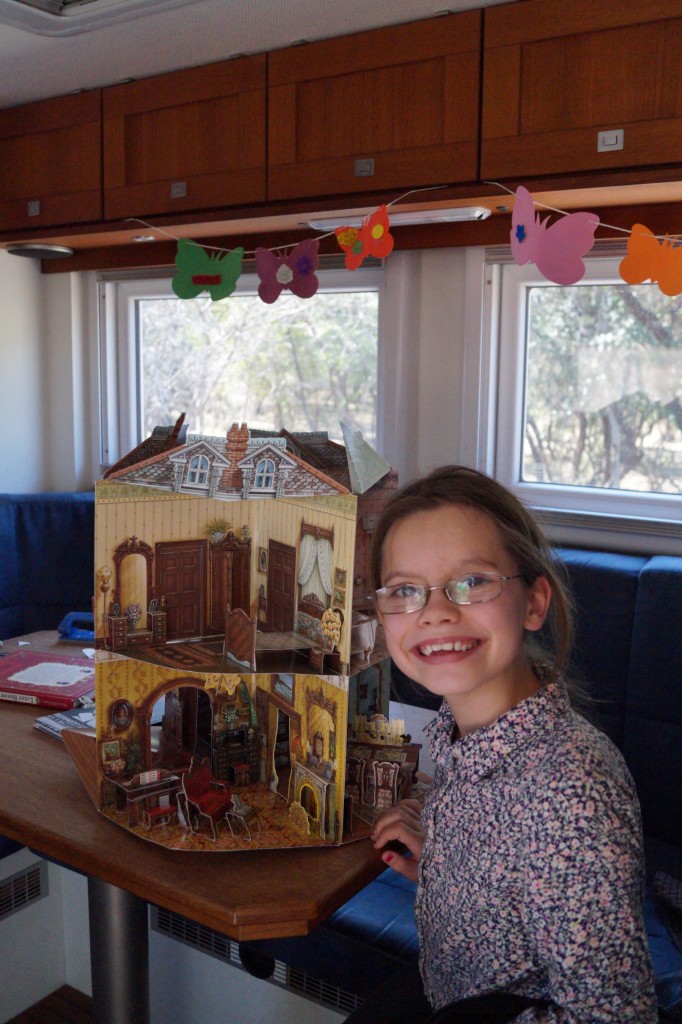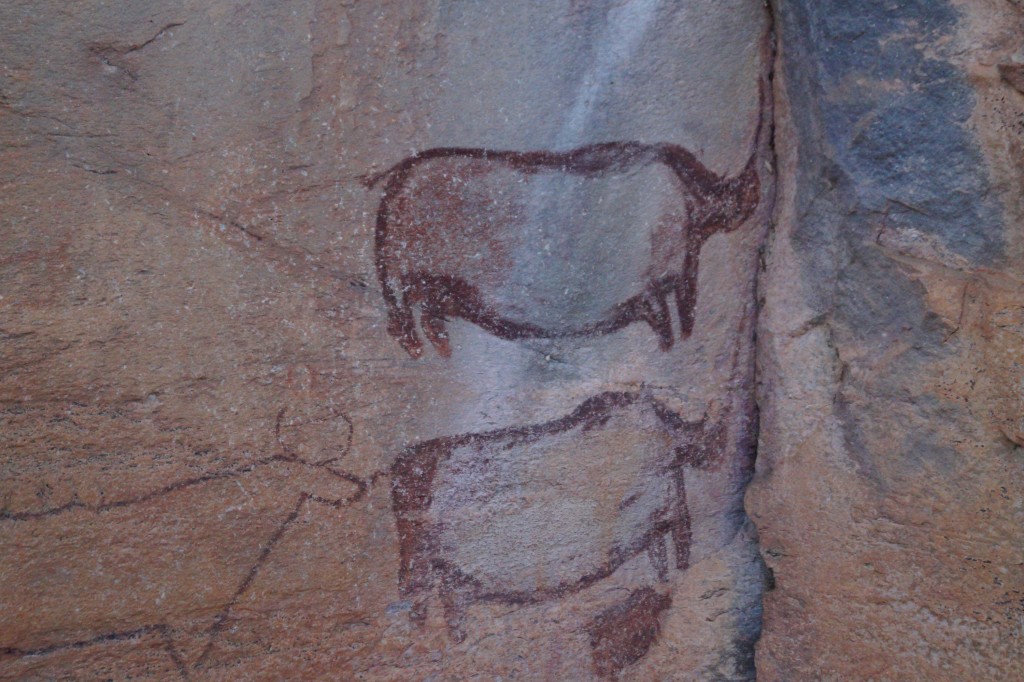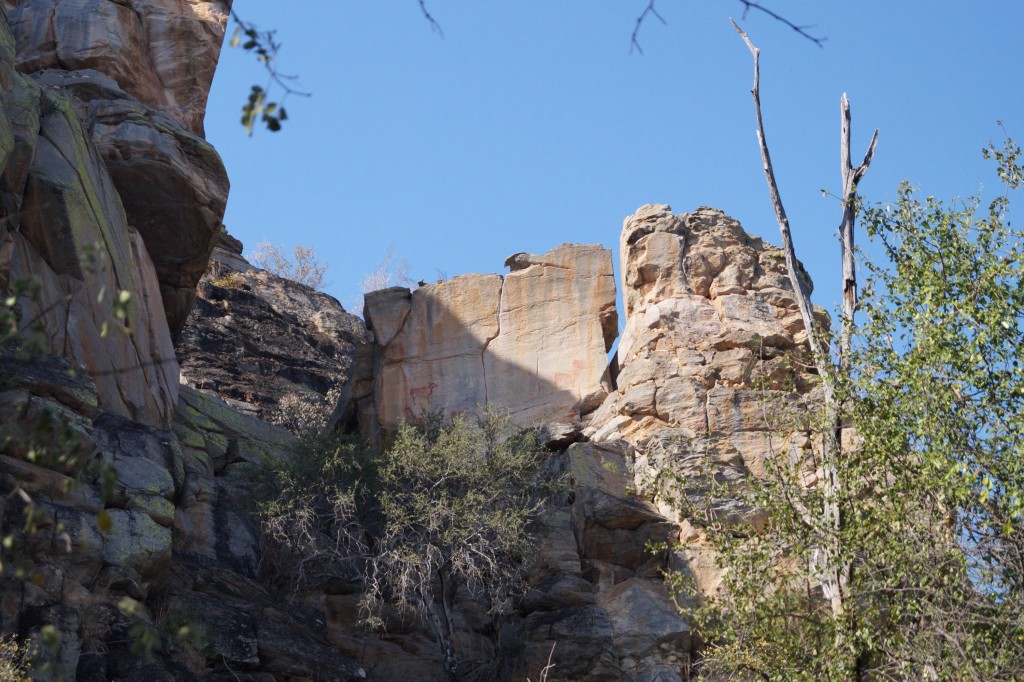The reeds parted as we scythed our way slowly and silently in our Mokoro canoe. Spread out on either side were the vast swathes of the Okavango Delta; river channels, shallow reed beds and drier islands. Hippos grunted warnings and the birds flitted from reed stem to reed stem. On land the giraffes wandered across the drier planes and elephants were grazing at the waters edge. Our two guides, KG and MP expertly poled our dug out Mokoro canoes through the shallower waters explaining life in the Okavango Delta and the seasonal rise and fall of the water. It was very relaxing and just magical.

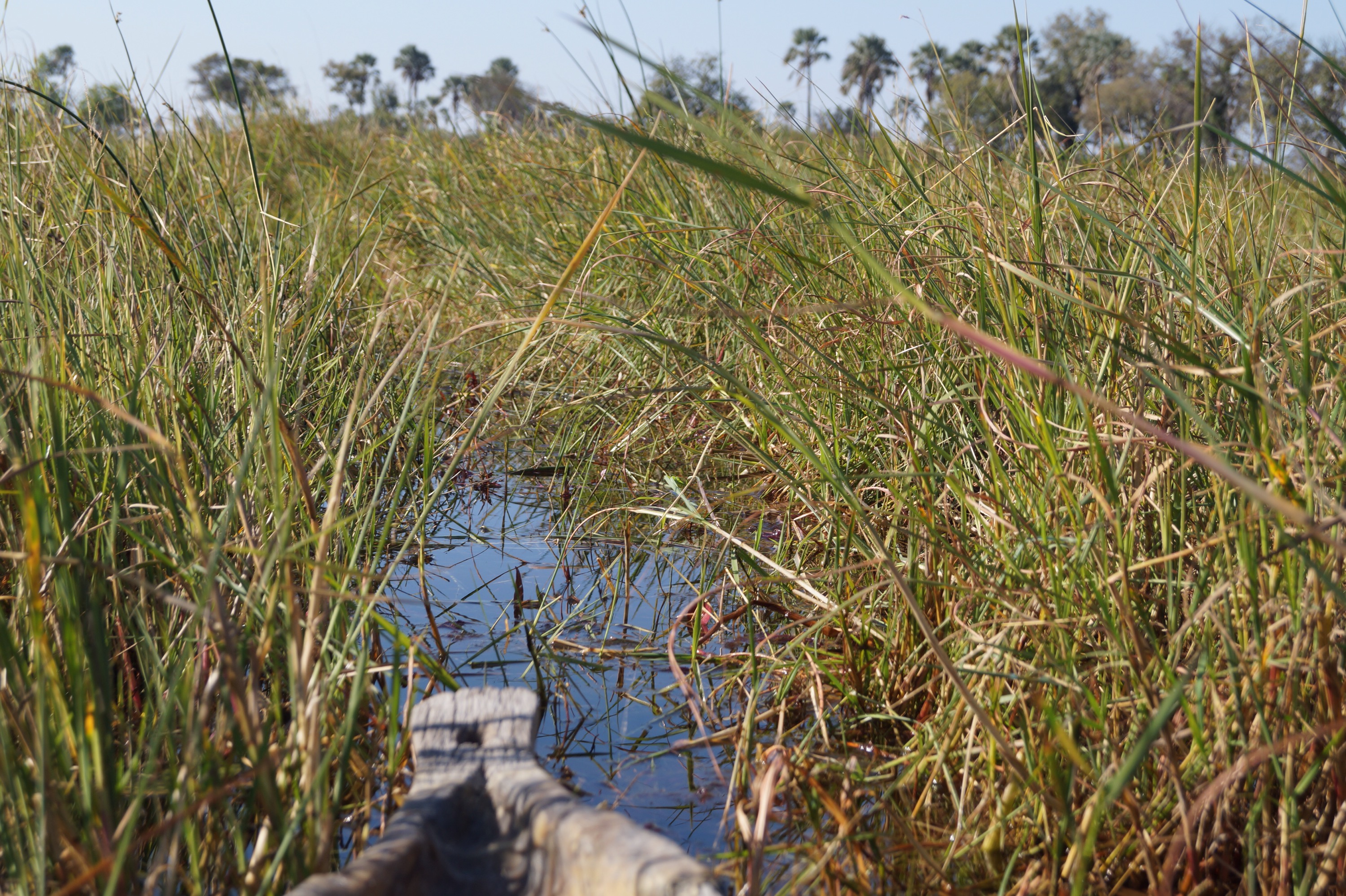
Just two days before, at the end of a long day's drive we had arrived in the bustling safari town of Maun. Our first stop had been to a travel agent to see if we could get a last minute deal into the Okavango Delta. It was peak season so we were not very hopeful that there would be space available. The travel agent, Mmegi was more positive, she assured us there would be space but the bigger problem was finding a camp that would let Lucy do all the activities. It also was not going to be cheap.
I had been to the Delta before and wanted to recreate the experience I had had of been out in a Mokoro on the water and camping wild on an island for the night. As we have done lots of safari driving ourselves I felt experiencing the waterways was more important than game drives to really feel the essence of the Delta. Things had changed since I first went and everything had gone upmarket but later that evening we received an e mail from Mmegi that she had found a camp in a wet part of the Delta that could do all we wanted and would even include a night out "rough" camping on an island. We considered this overnight and decided it was ideal. However we could not resist the idea of going to one of the lovely upmarket camps to do some game drives especially with their knowledgeable guides and their ability to get close to the wildlife so asked Mmegi if she could add that too. Later that morning we walked into her office to find she had an offer waiting for us for at 2 very different camps in the Delta and we could leave the following day. Excitedly we booked and headed into Maun to sort various bits and pieces out.
The next day, less than 48 hours after arriving in Maun, we were boarding our 8 seater aircraft for our 20 minute flight into the Okavango Delta. The River Okavango originates in the highlands of Angola and flows down into Botswana where it disappears into the Kalahari sands without ever reaching the sea. The Delta it forms is protected and rich in wildlife. In the dry season the delta waters are at their highest and wildlife flocks to it from far and wide. The flight into the Delta has to be one of the most scenic flights there is, as you fly low over the Delta waters and can see the palm trees and islands together with scatterings of game.


We landed at the airstrip and were transferred by Mokoro Canoe to Delta Camp. This was not exactly roughing it. We had a reed family chalet with ensuite bathroom. Mind you it was a fair walk from the main bar and dining area and we frequently encountered elephants on the path while heading to our room. Our time at Delta camp was spent doing rides in the Mokoro canoes and talking walks on the nearby islands. This was not in fenced areas but with the rest of the animals. Our guides were well versed in animal behaviour and assured us it was all very safe. They did not carry guns and said if we did encounter any of the "big 5" (elephant, rhino, lion, leopard or buffalo) at close quarters while out walking we had to stand still and on no account run. Normally we love to see the big cats but this time Gilly was really hoping we would not come across them. We did however find fairly fresh lion prints and she was a bit perturbed when our guides started following them!
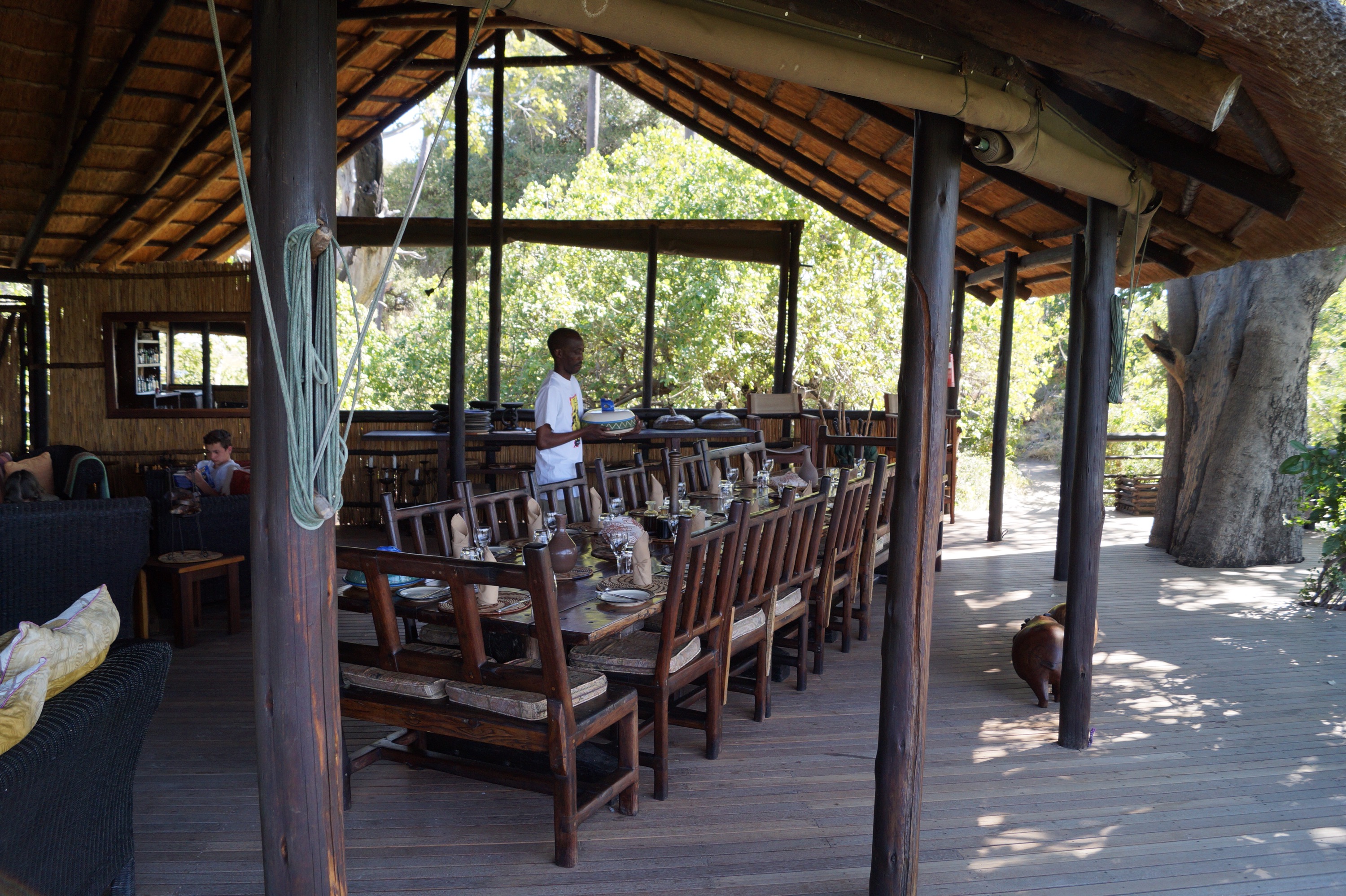
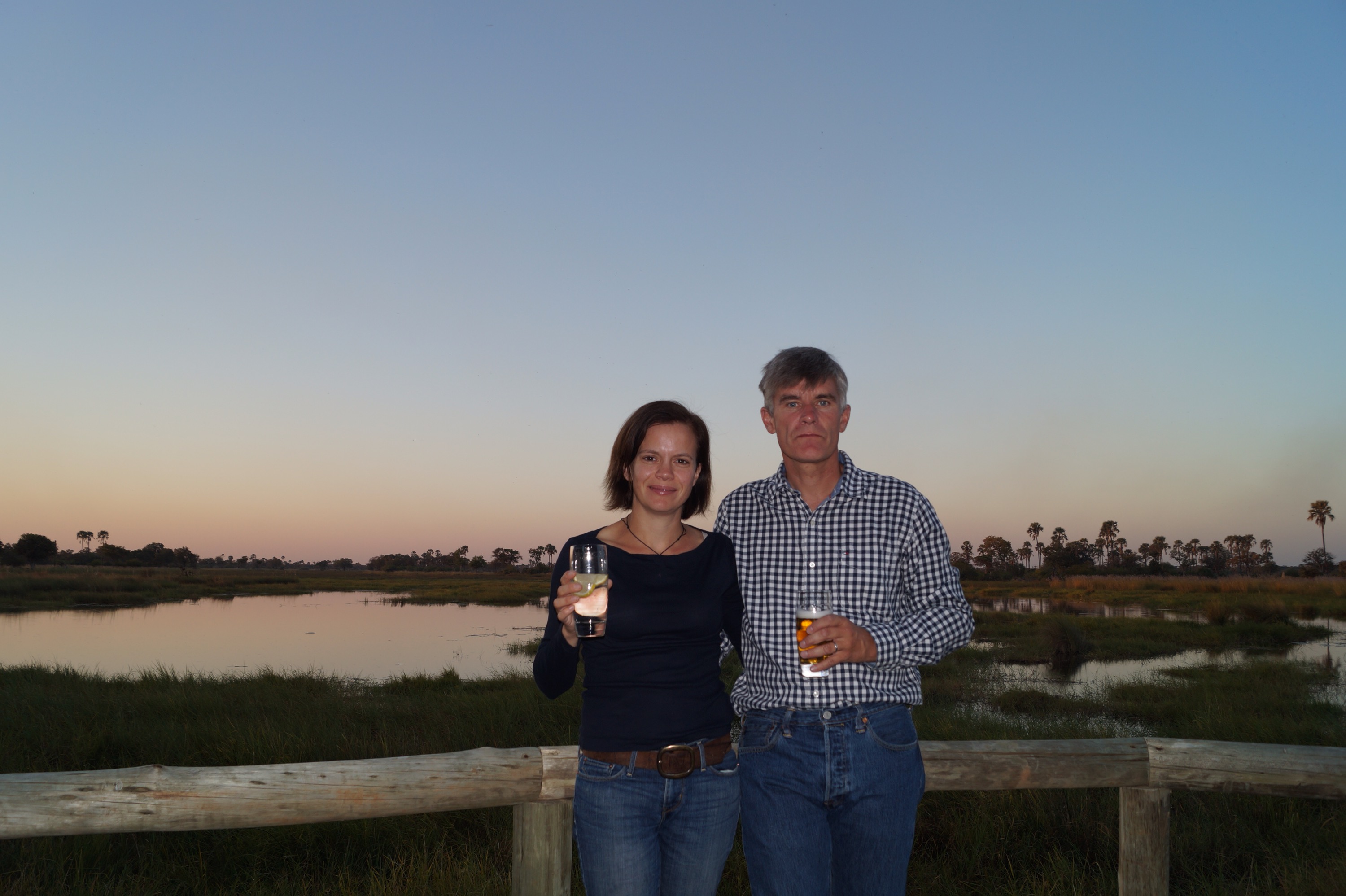
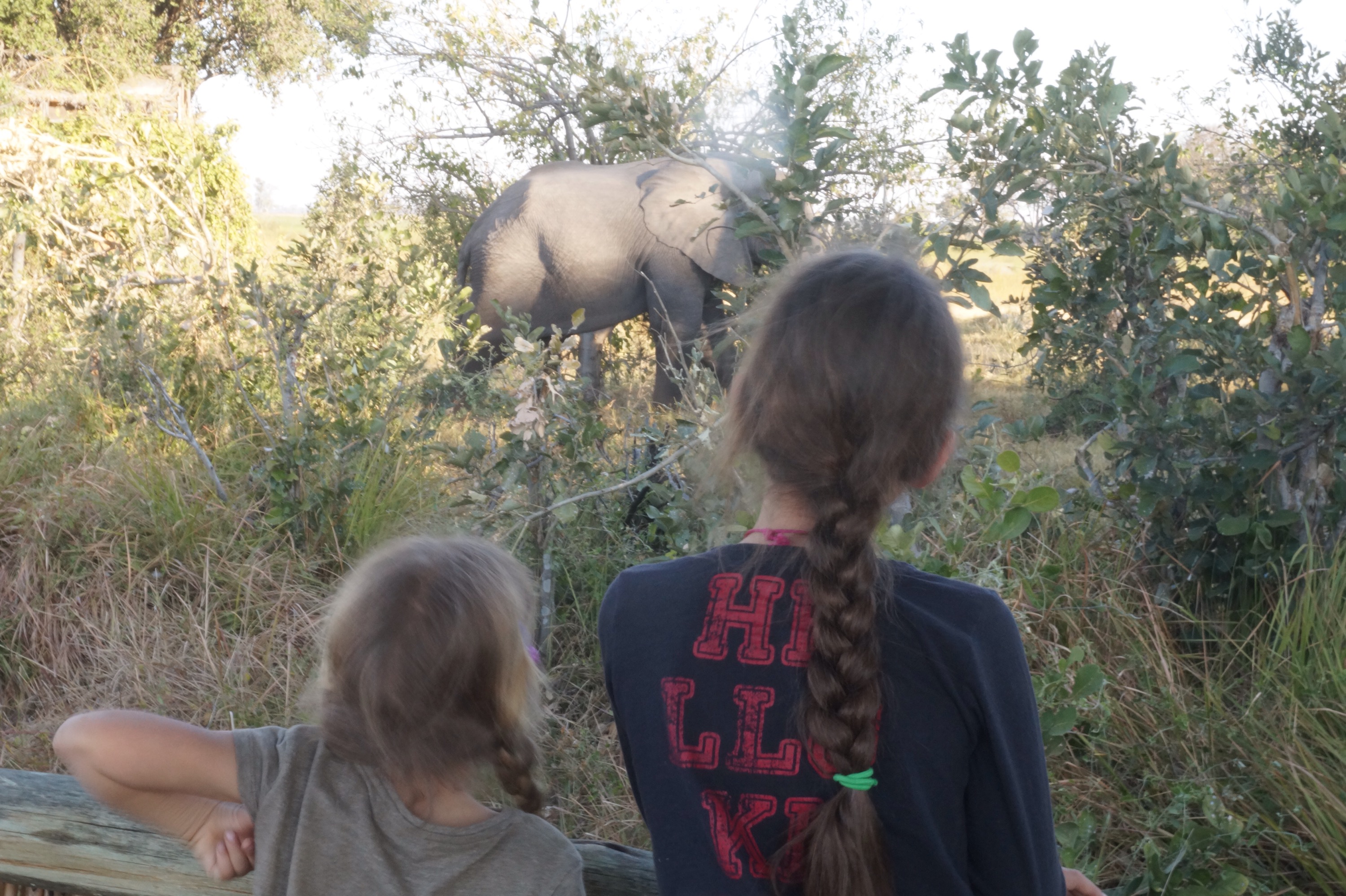
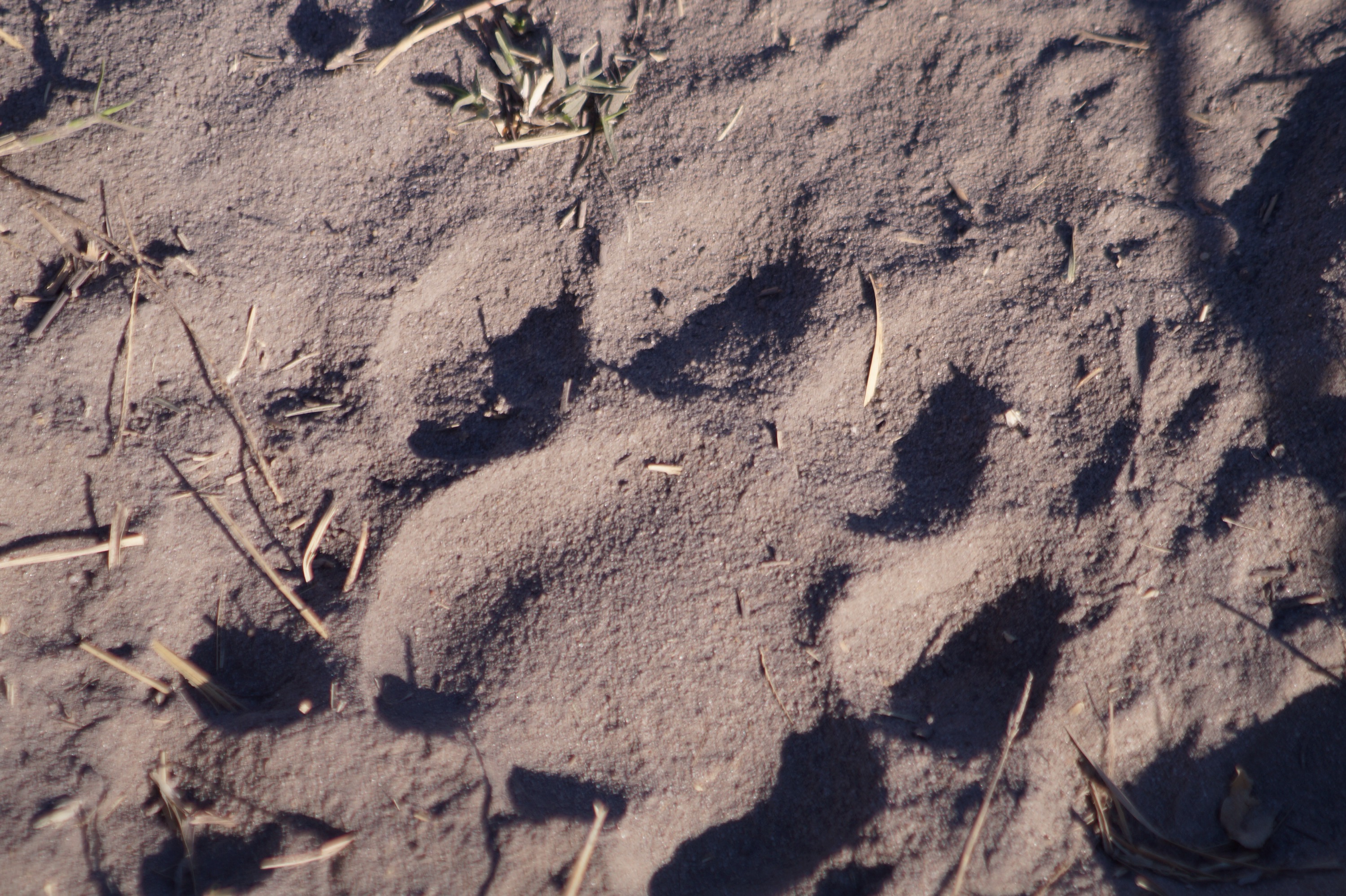
We did though see plenty of other game; giraffe, Impala. Zebra, red lechwe, warthog, giraffe etc and I was surprised at how close we could get to the animals on foot. Much closer than when I had visited 20 odd years ago. The guides said that with the area been protected the wildlife is now much more used to seeing humans on foot and does not perceive them to be a threat. The photos below may not be as good as some of the ones we have posted before but they were taken while we were on foot.
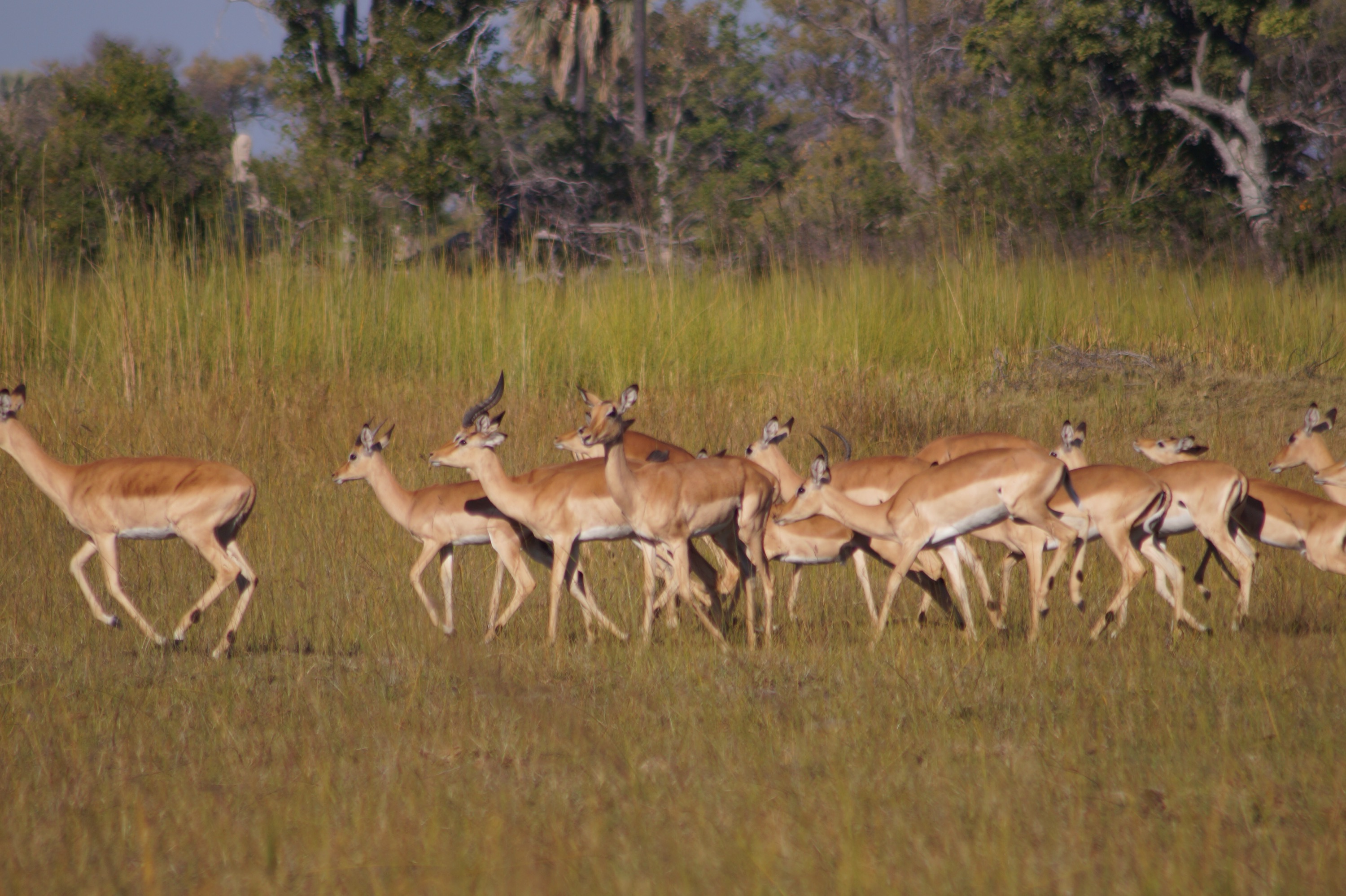
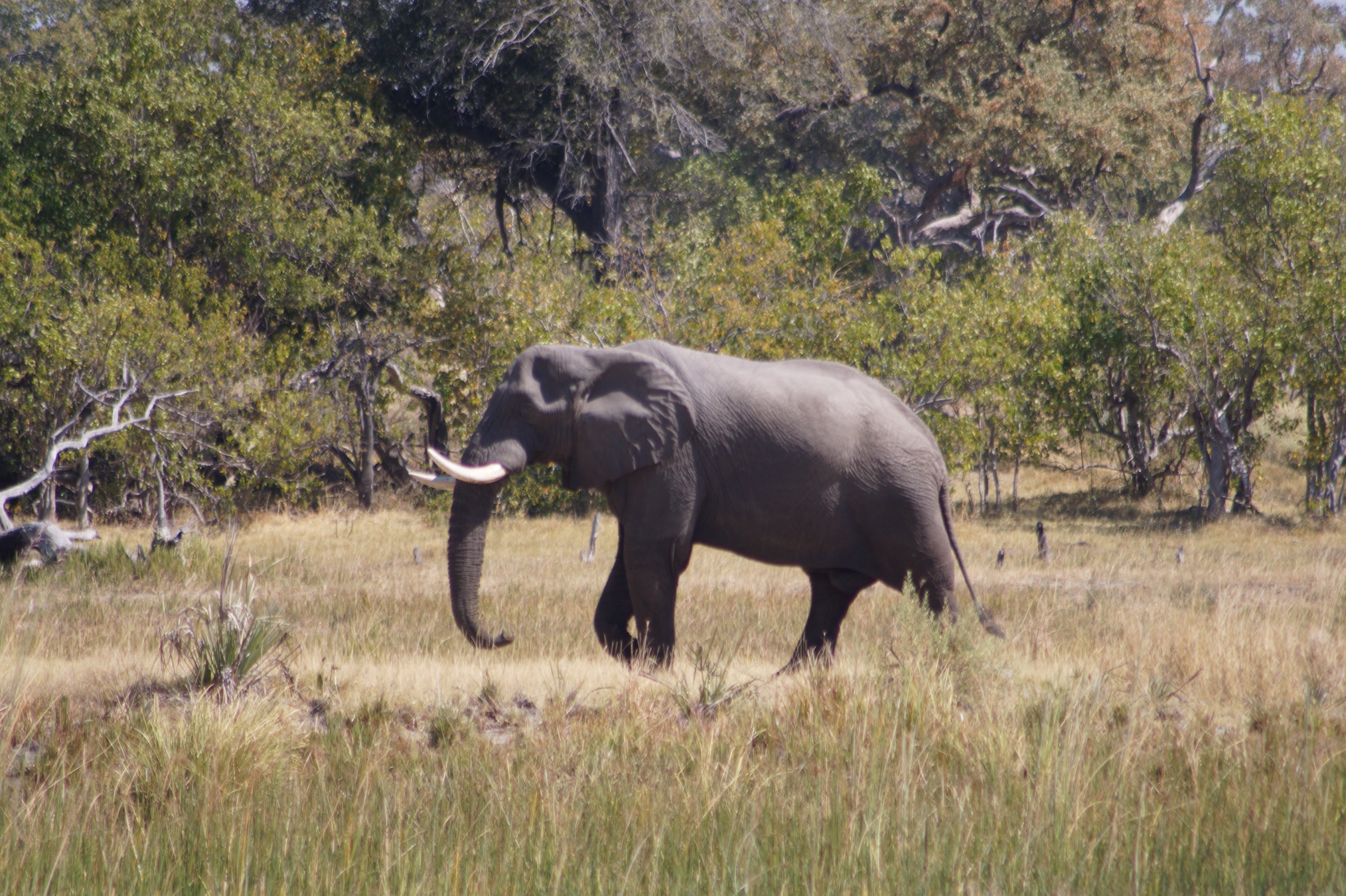
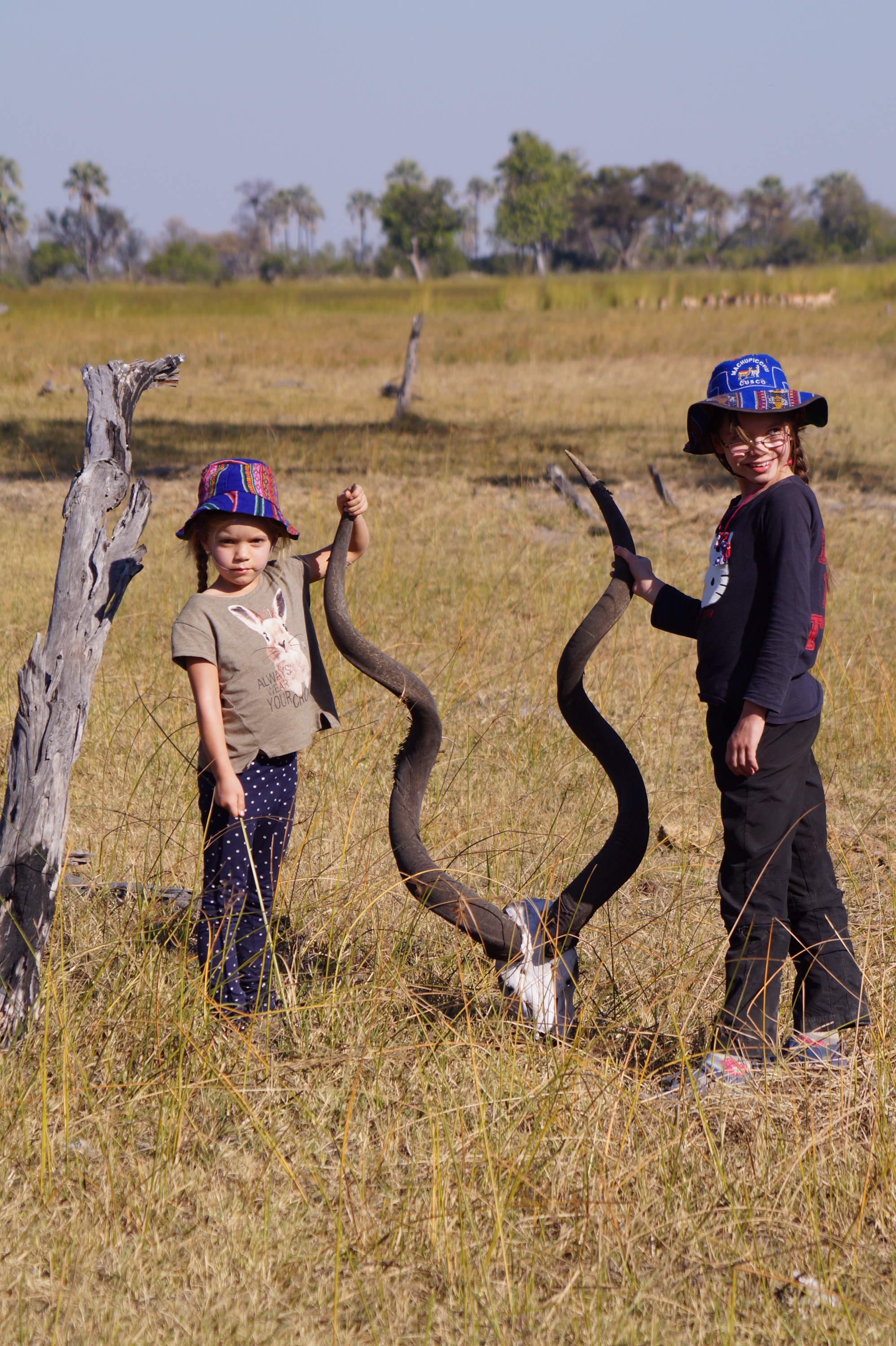
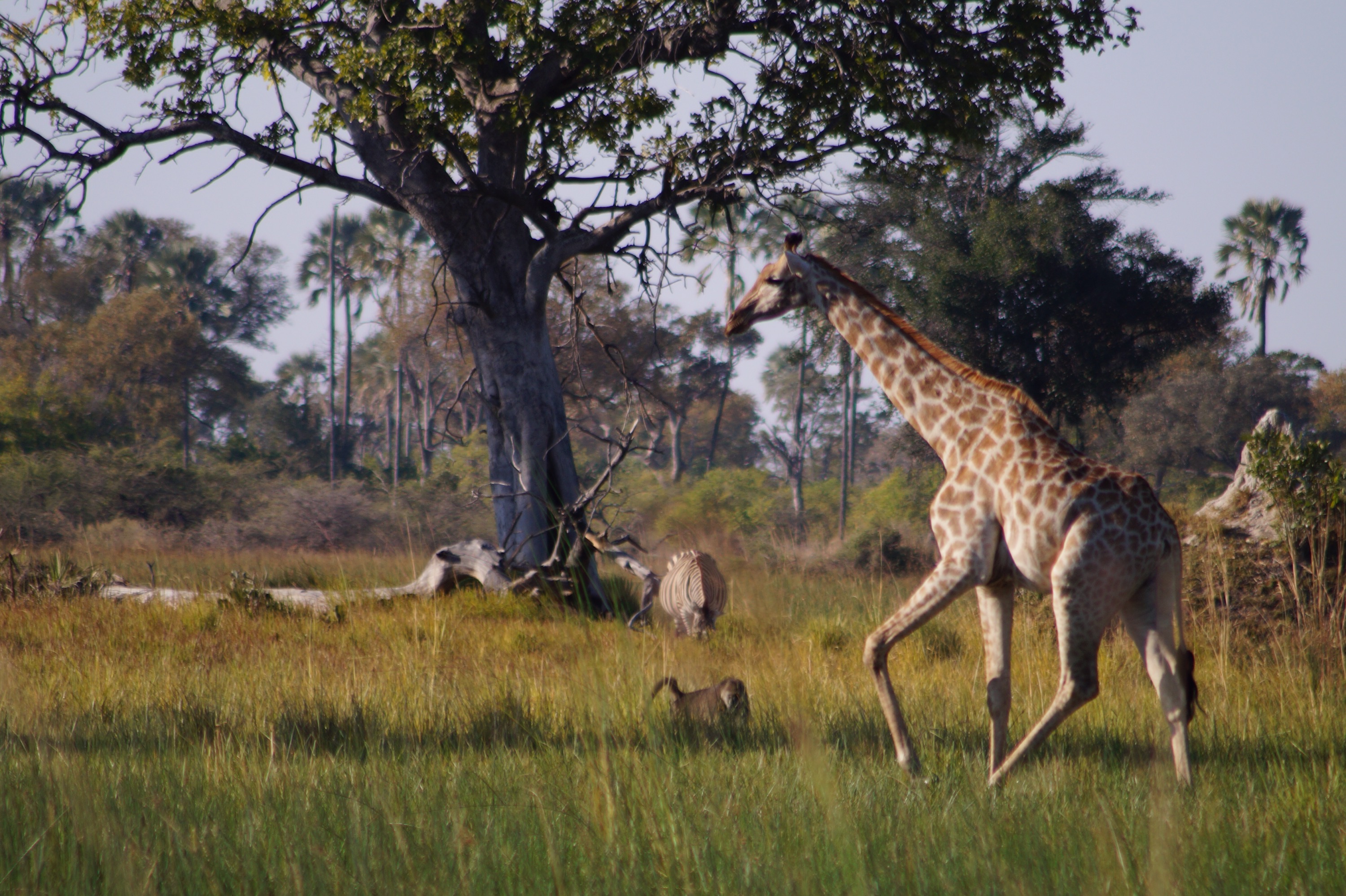
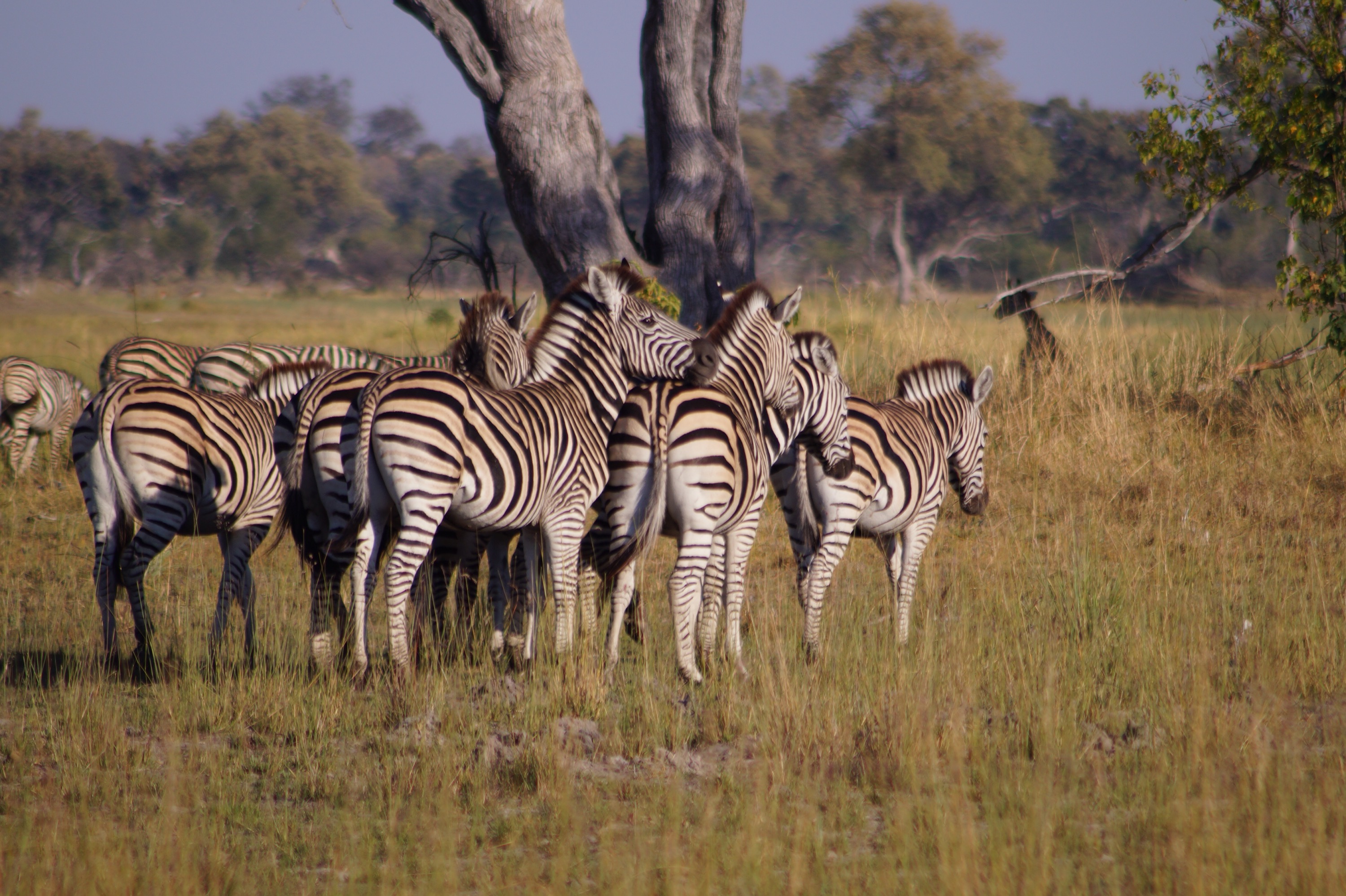
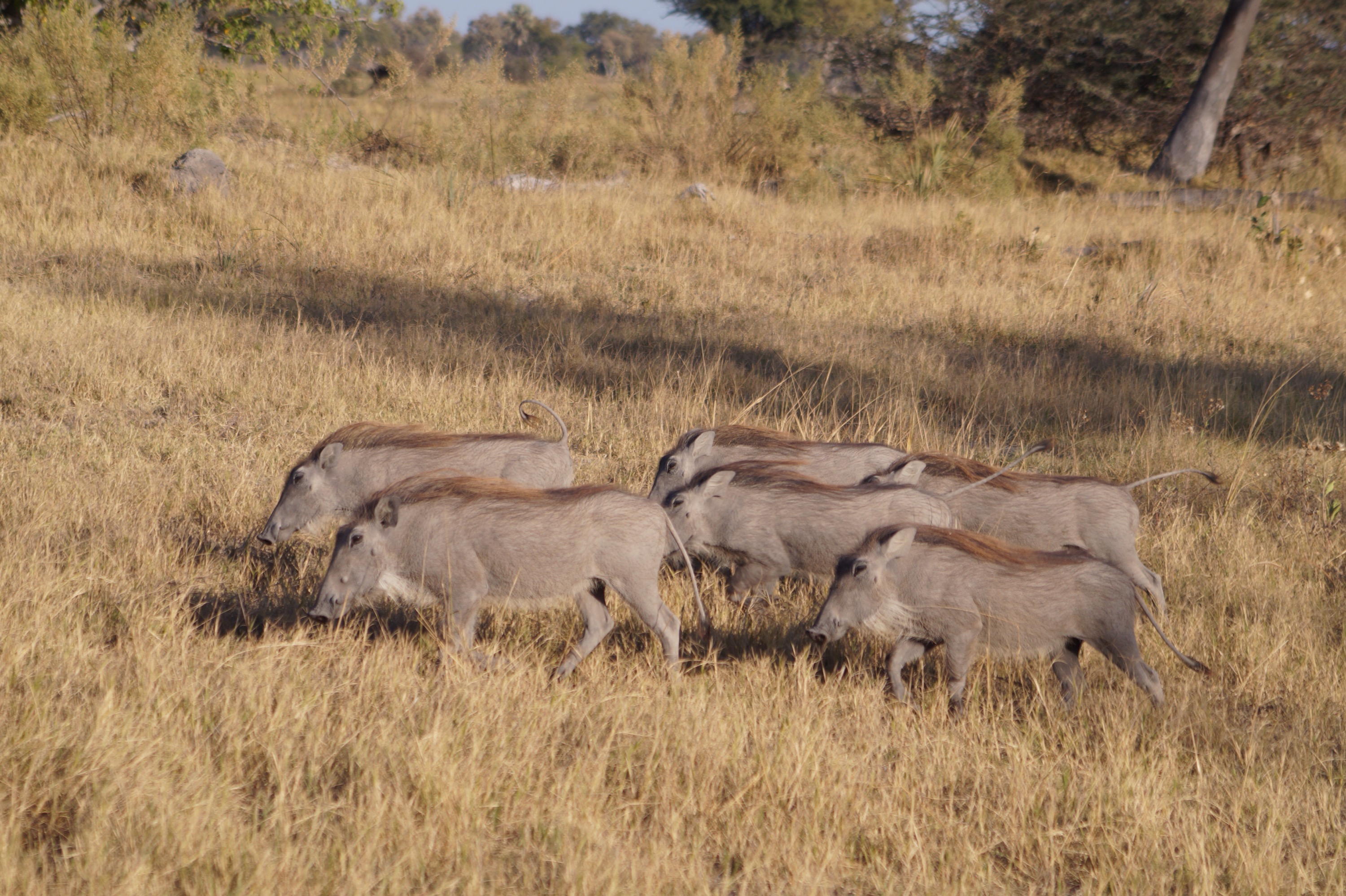
On our middle night we went off to camp "rough" on an island by ourselves. I say by ourselves, there was actually the four of us plus 2 guides, a cook and a waiter. And it was hardly roughing it as the tents had already been set up with mattresses and duvets and a nice table to eat at. Still we had to manage with a bush shower and toilet. We spent a wonderful 24 hours at the camp. It felt like we were really out in the wilds which we were and it was so peaceful watching the water flow by and observing the wildlife. We even did a spot of fishing and caught enough for tea.
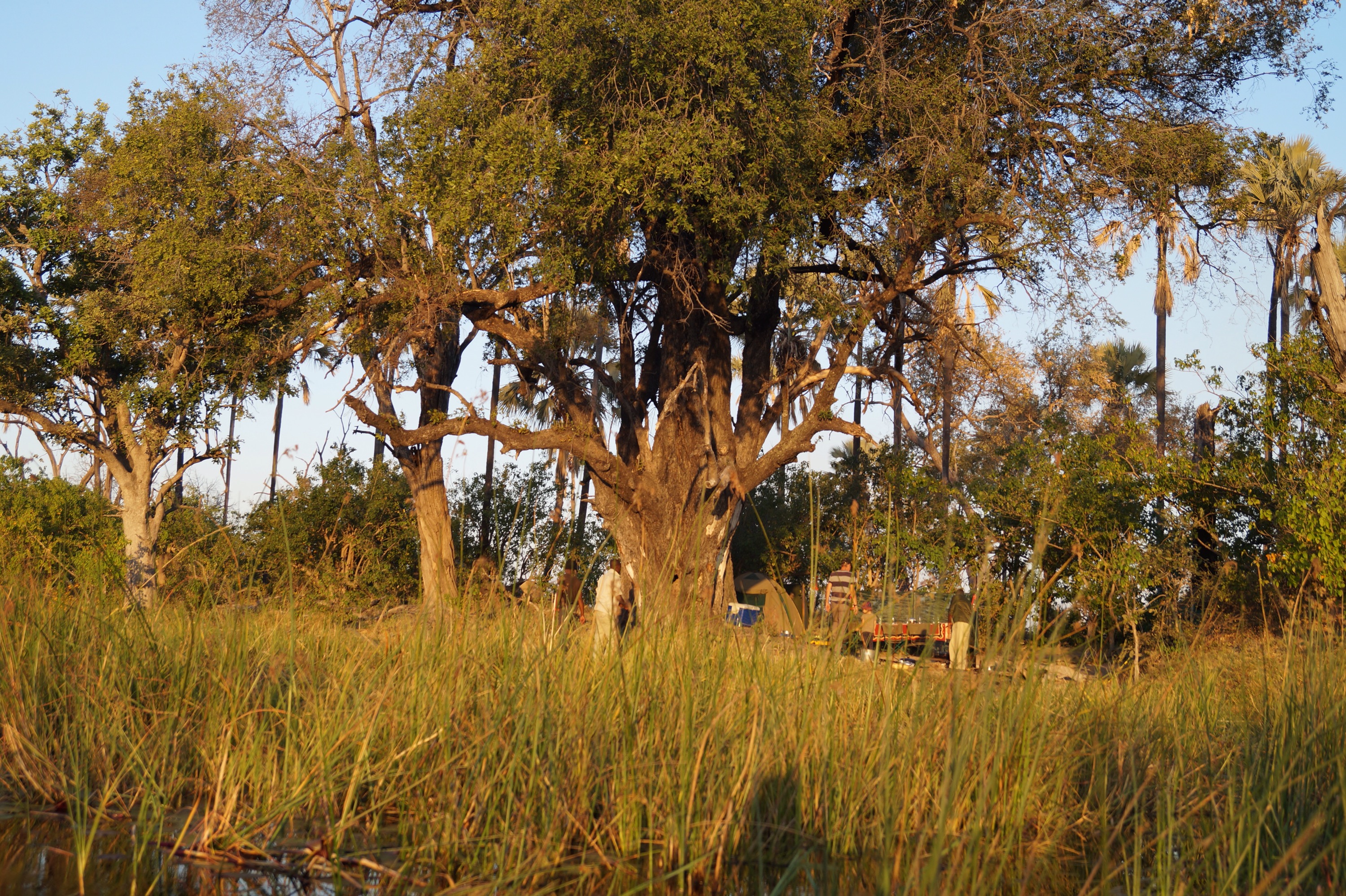
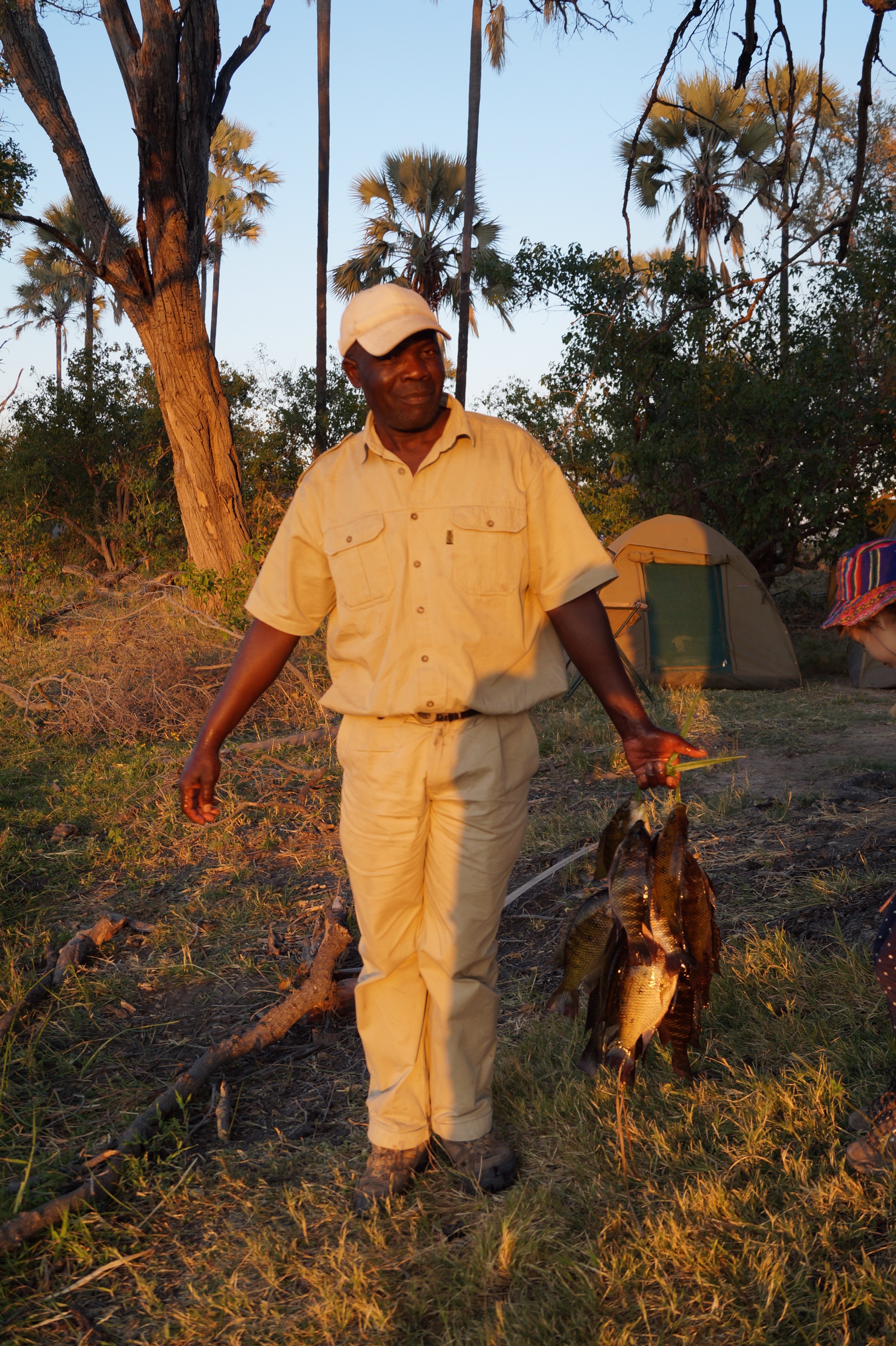

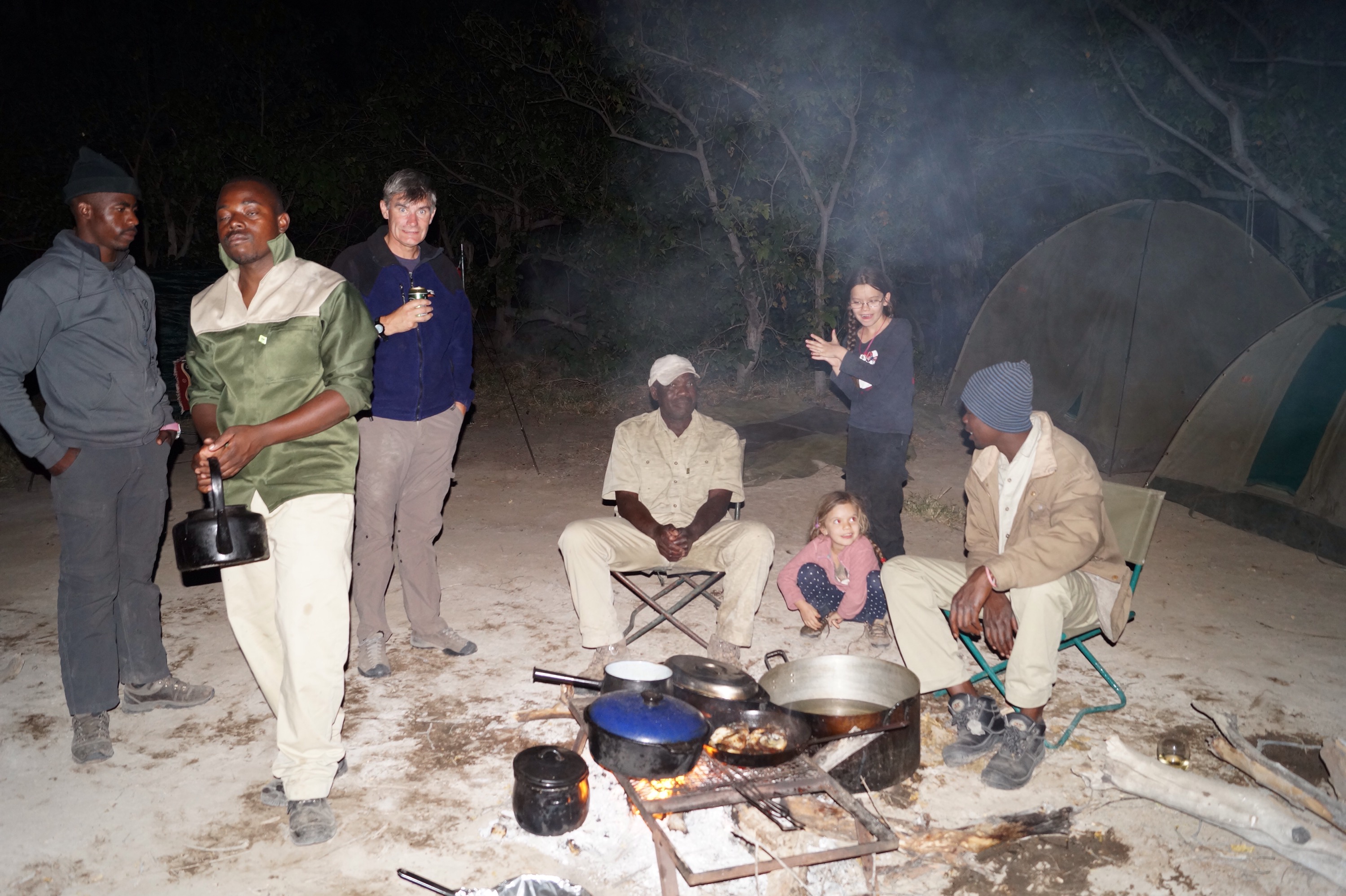
Sleeping in the tent means you can hear all the night noise of the bush. Whilst Alisha and Lucy slept as normal, Gilly and I were much lighter sleepers than usual. We could hear a lion roaring but far away and then at about two in the morning we heard a loud swishing sound followed by heavy things falling from the sky. This was elephants rocking the palm trees to get the palm nuts to fall to the ground. It was pretty loud as the elephants were less than 50 metres away.
We thoroughly enjoyed our time at Delta Camp. The staff and guides were from the local village just outside the Delta and we talked to them a lot about their lives and how the Delta has changed. They really knew their stuff. One afternoon we went out for a walk to look for large owls. I will never know how they were able to spot them in the trees from so far away.
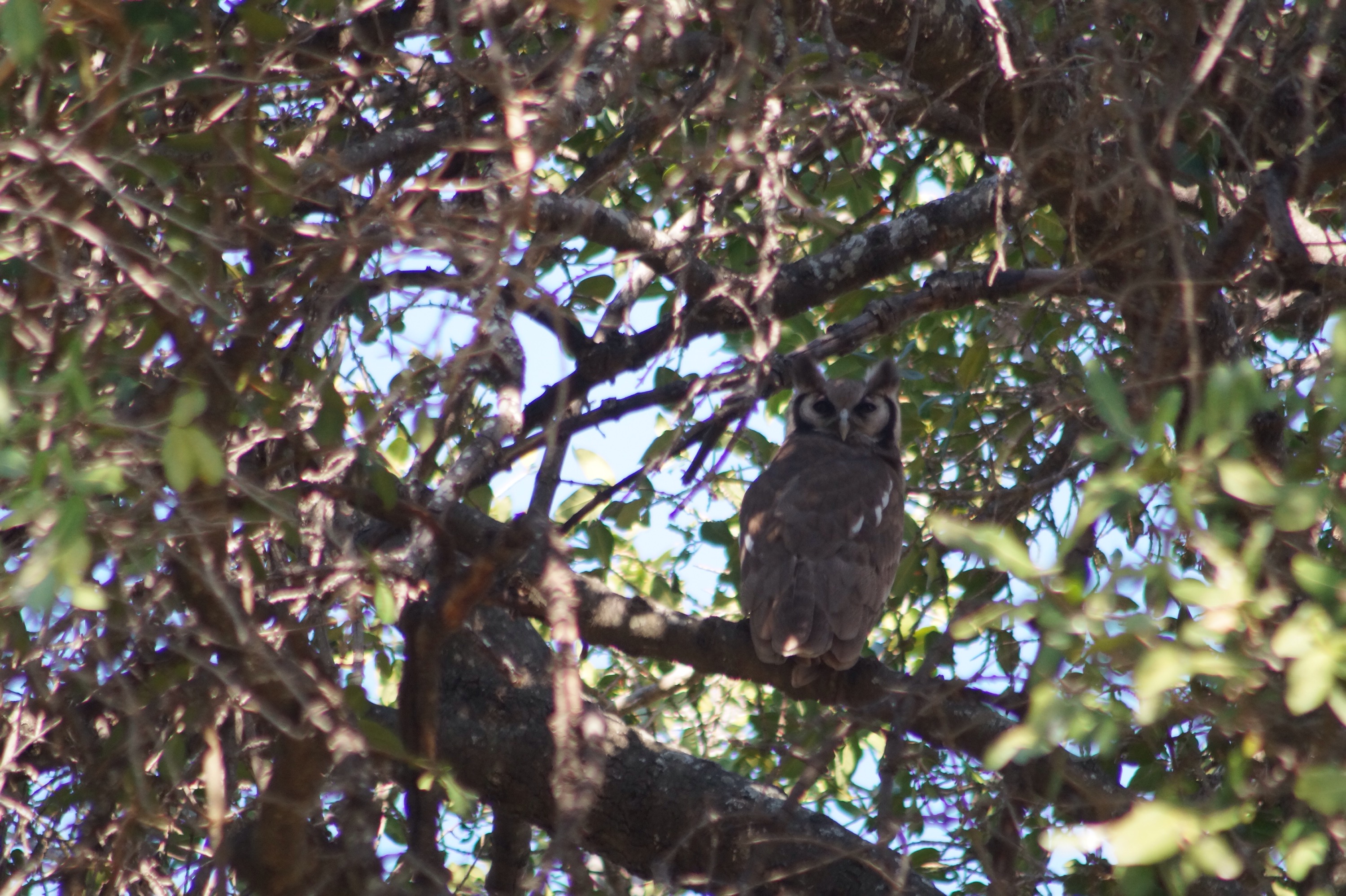
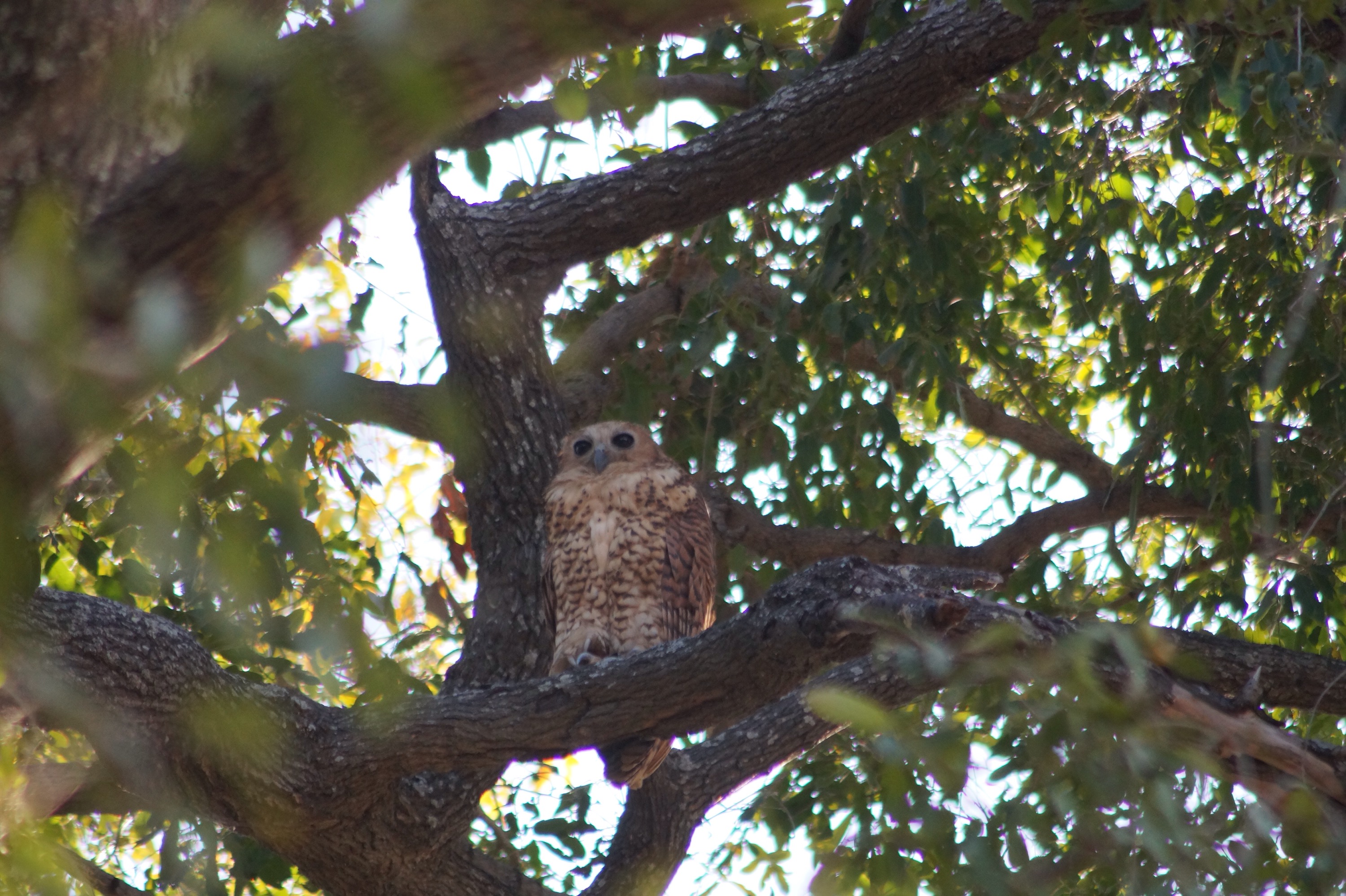
On our last morning we arrived at the dining area for morning tea to be told that the island's resident leopard had been in the kitchen overnight. In fact it had slept on one of the sofas and had then scent marked all over it.
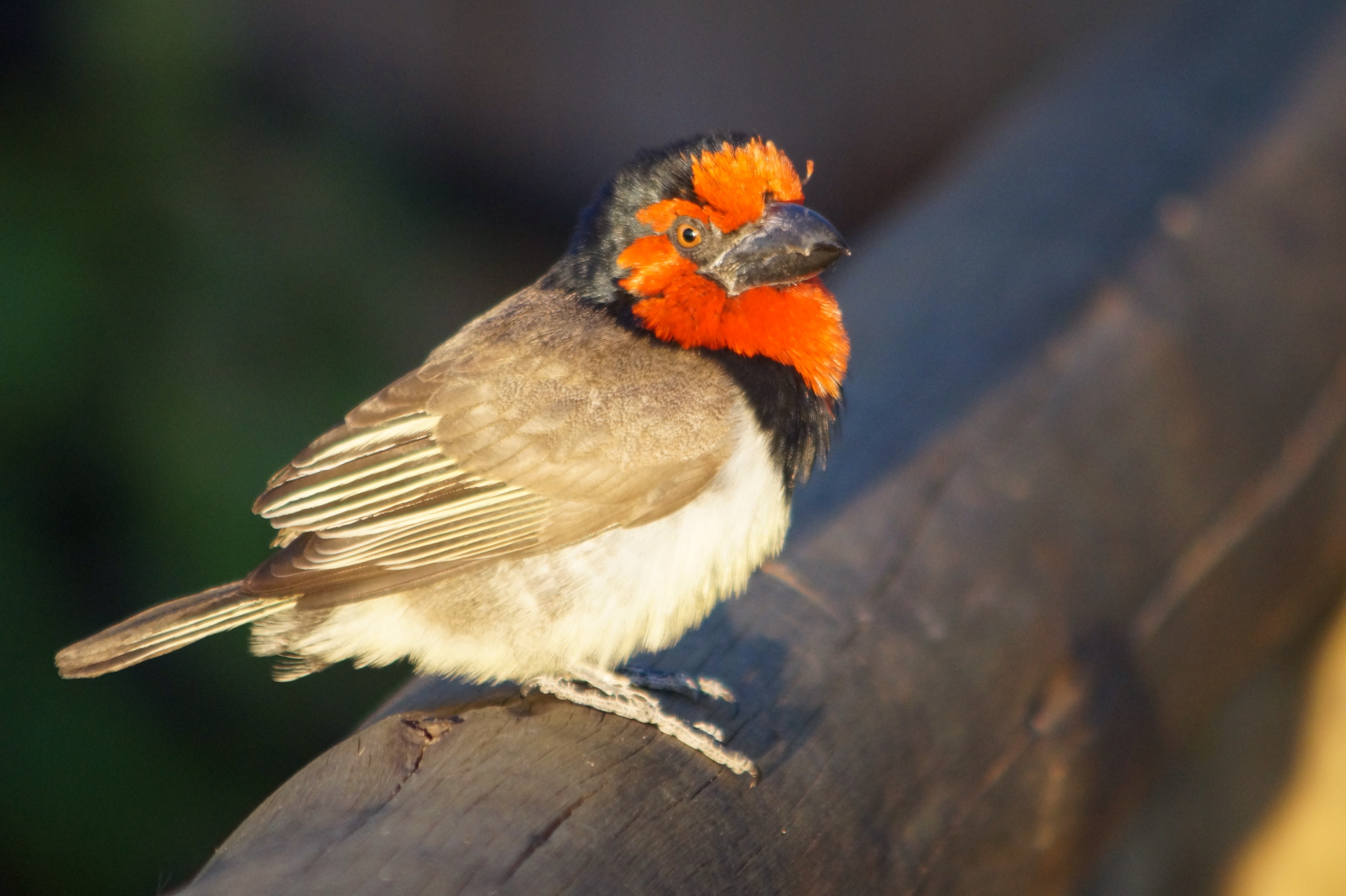
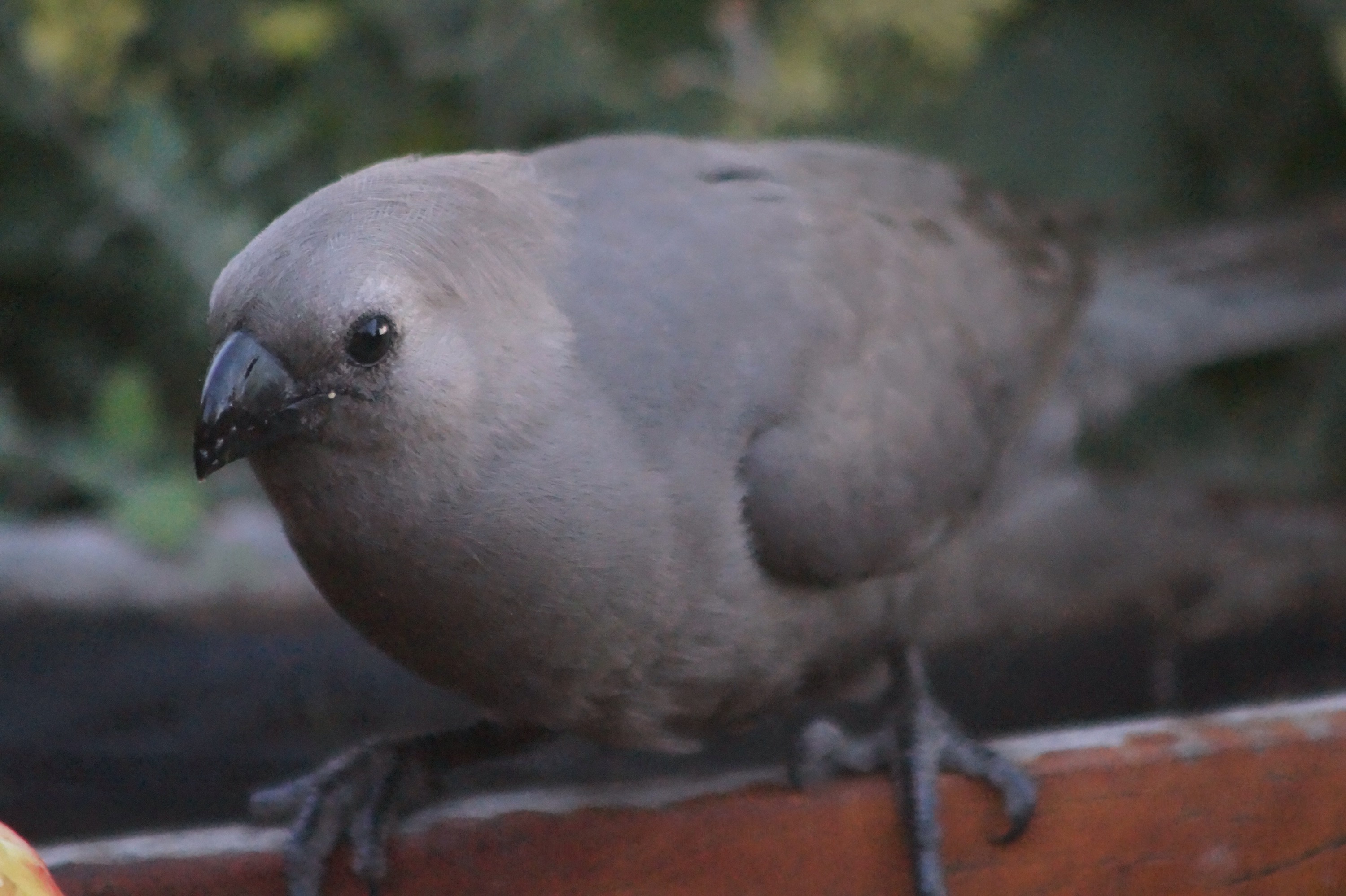
It was time to leave though and we caught another short flight over the Delta to our next camp, Chitabe Letiba. If we thought our last camp was pretty fancy, this one took it up to a whole new level. We had the family tent which was actually 2 very large tents joined together with outdoor decking overlooking a small wetland where elephants came down to drink. The rooms themselves were massive and had all the amenities of a 5 star hotel plus an outside shower. Gilly and I both looked at each other and said we could really get used to this.
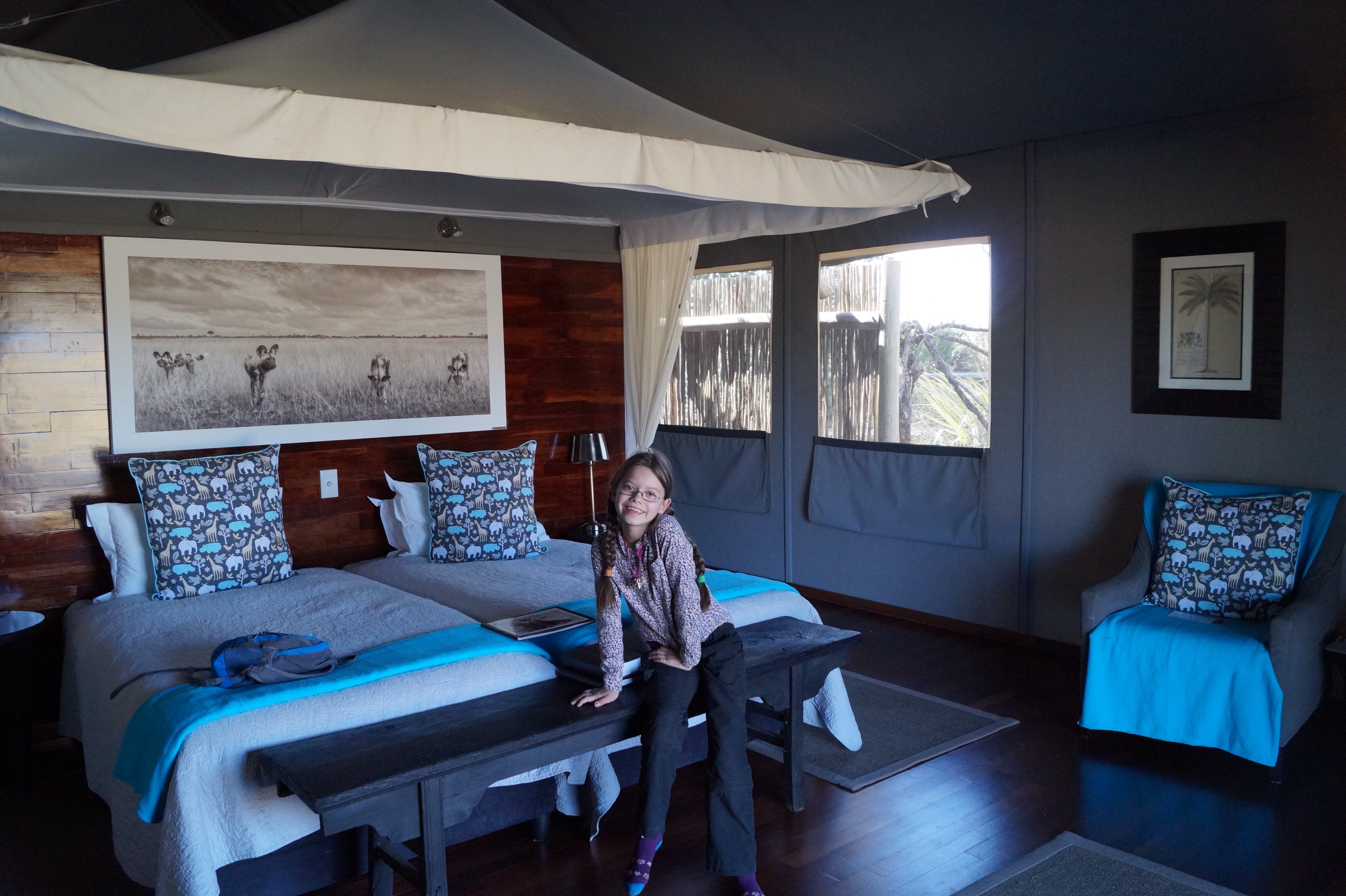
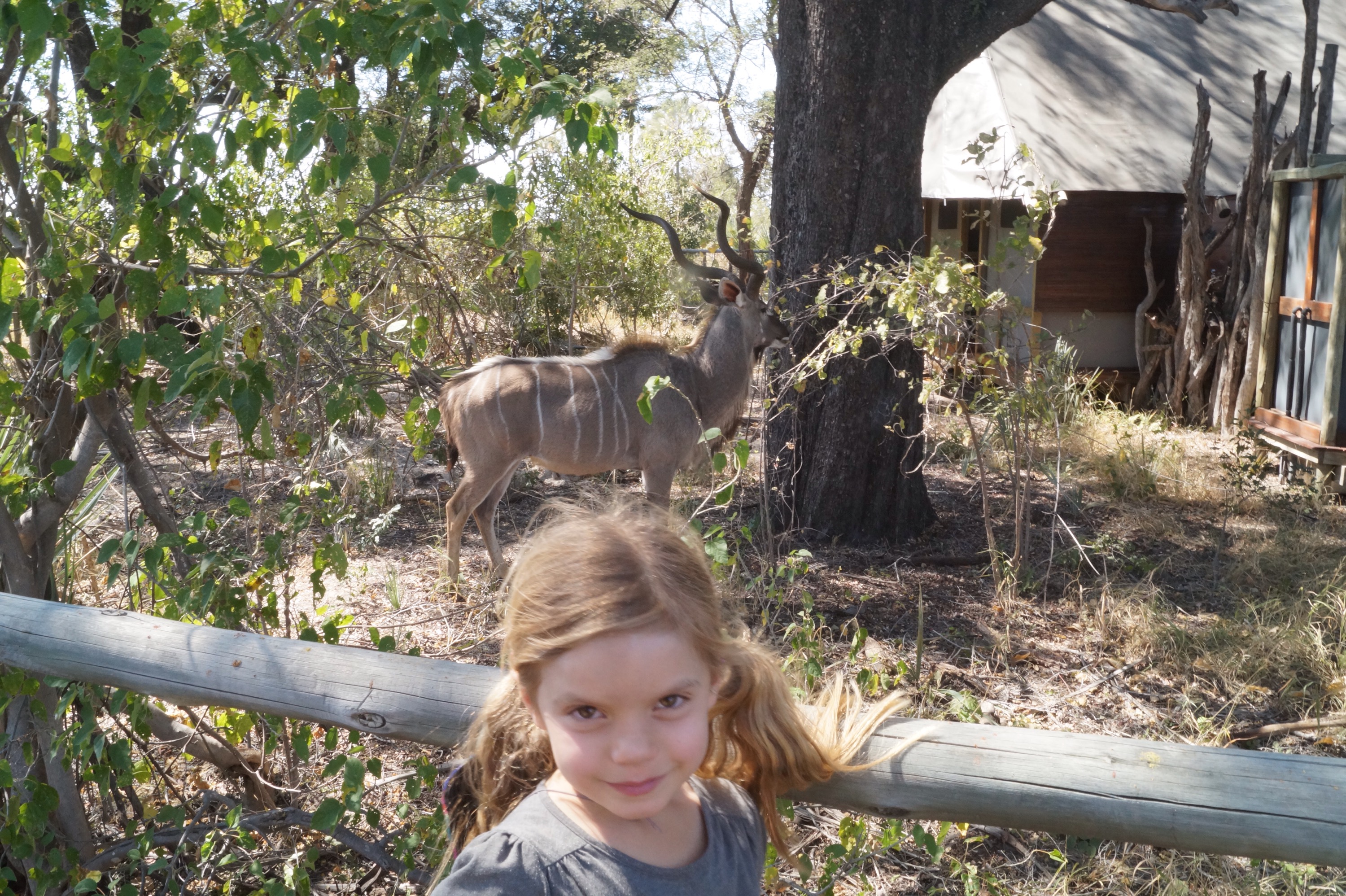
This camp was in a drier area of the Delta so the focus was on game drives in open sided Land Rovers. It was going to be good to not have to worry about the driving or scratching the vehicle on trees for a change. Plus driving on the roads in these private concessions is optional for the guides. As there are so few vehicles they are allowed to drive off-road so can get really close to the animals. On our drive in from the airstrip the animals were completely unperturbed and the impala would barely move off the road to allow the vehicle through.
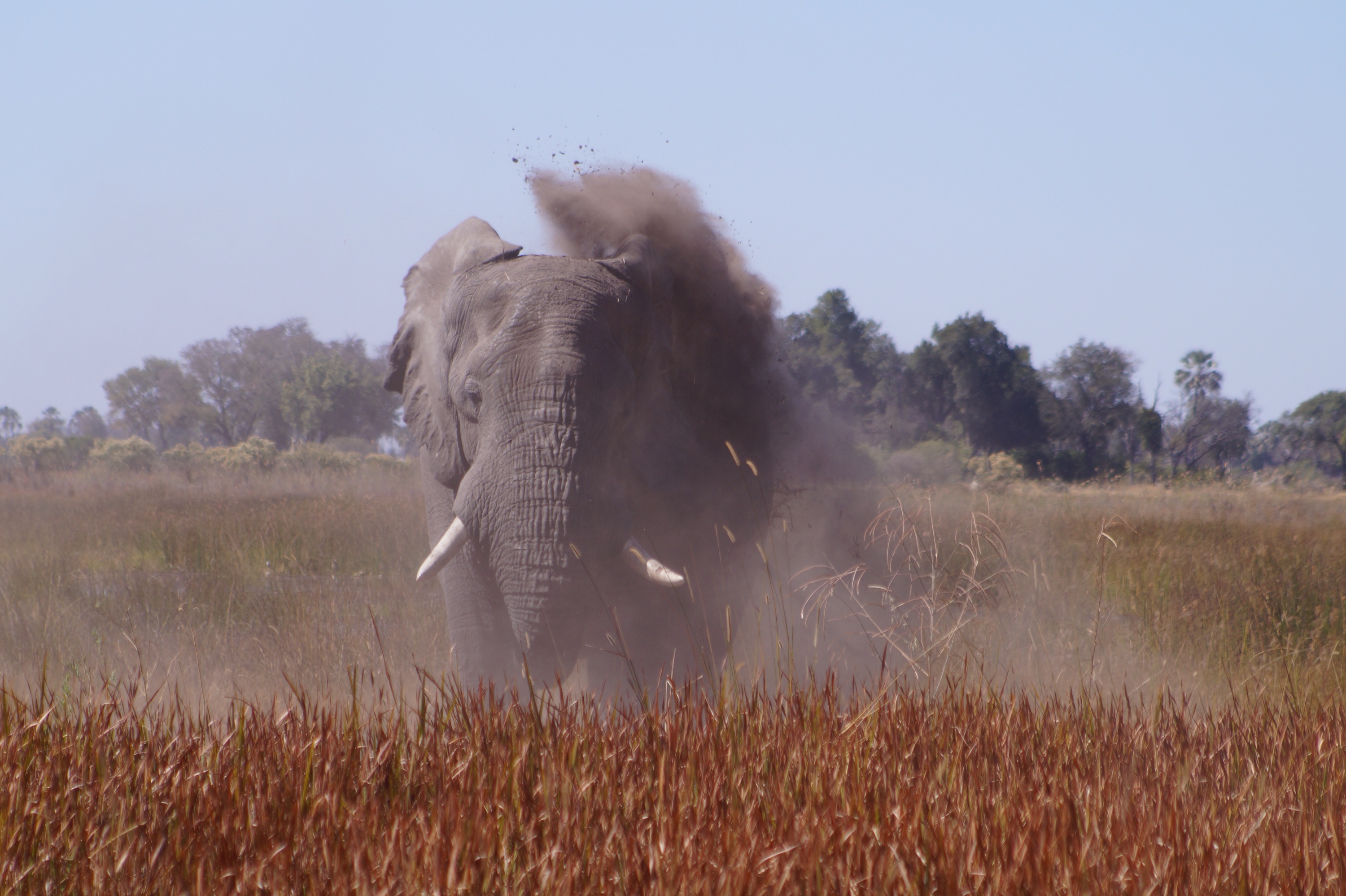

We met our guide, OD who asked Lucy if there was anything in particular she wanted to see. She said "Wild Dog", one of the rarest large carnivores in the world. He said they had them on the concession but as they were usually a little further away we would leave them to the following morning. Not to worry, he said I am sure we will find something equally interesting. And he was not wrong! After a short drive he pulled off the road and stopped and quietly said, "Do you see it?". "Yes," I said "A big male lion, just in front". "Oh" he said "I had not seen him, I was looking in the tree". We looked in the tree where a female leopard was lying on a branch. The lion and the leopard had clearly seen each other though as they were busy staring at each other. The leopard though was pretty safe up the tree.
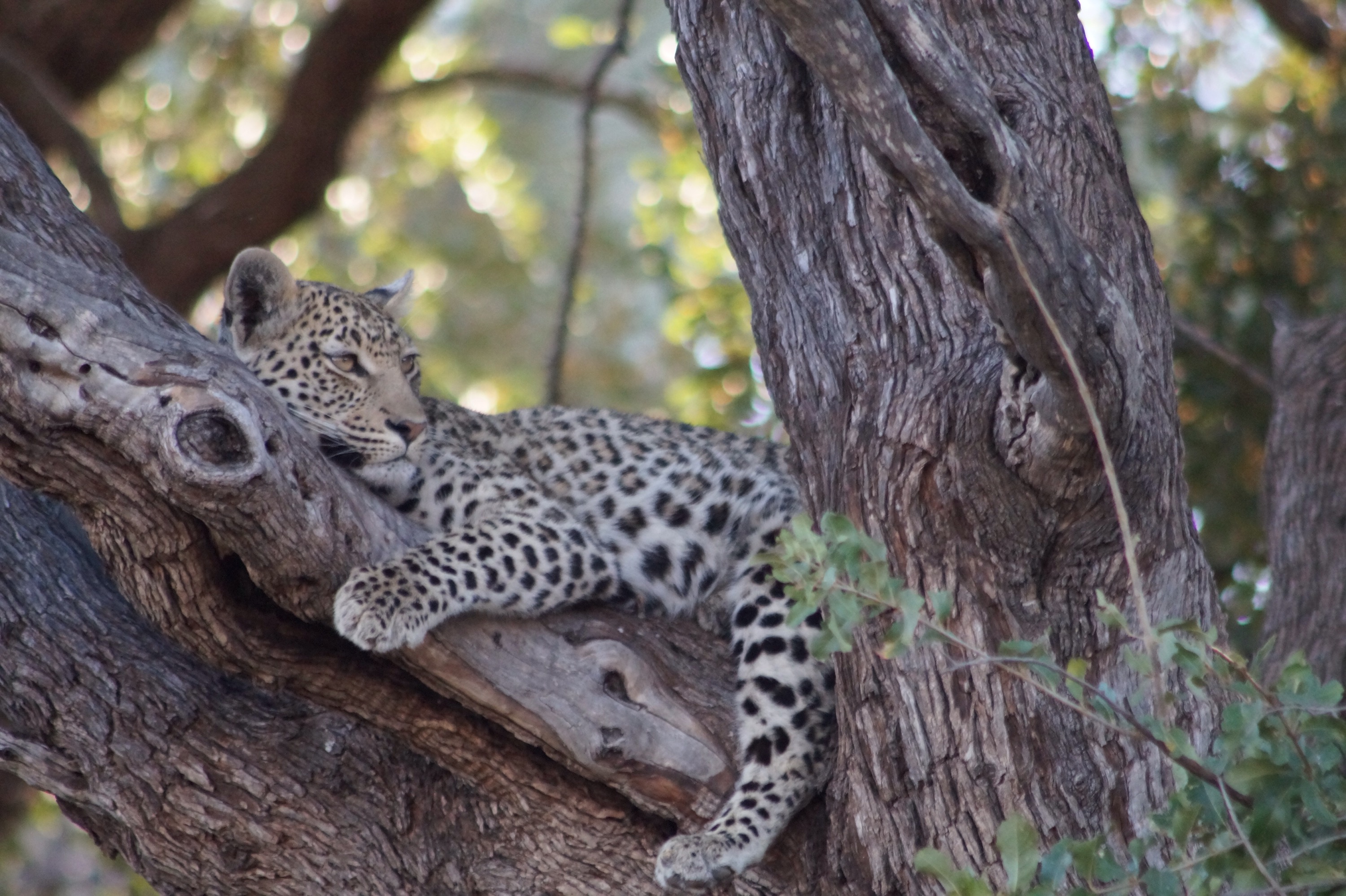
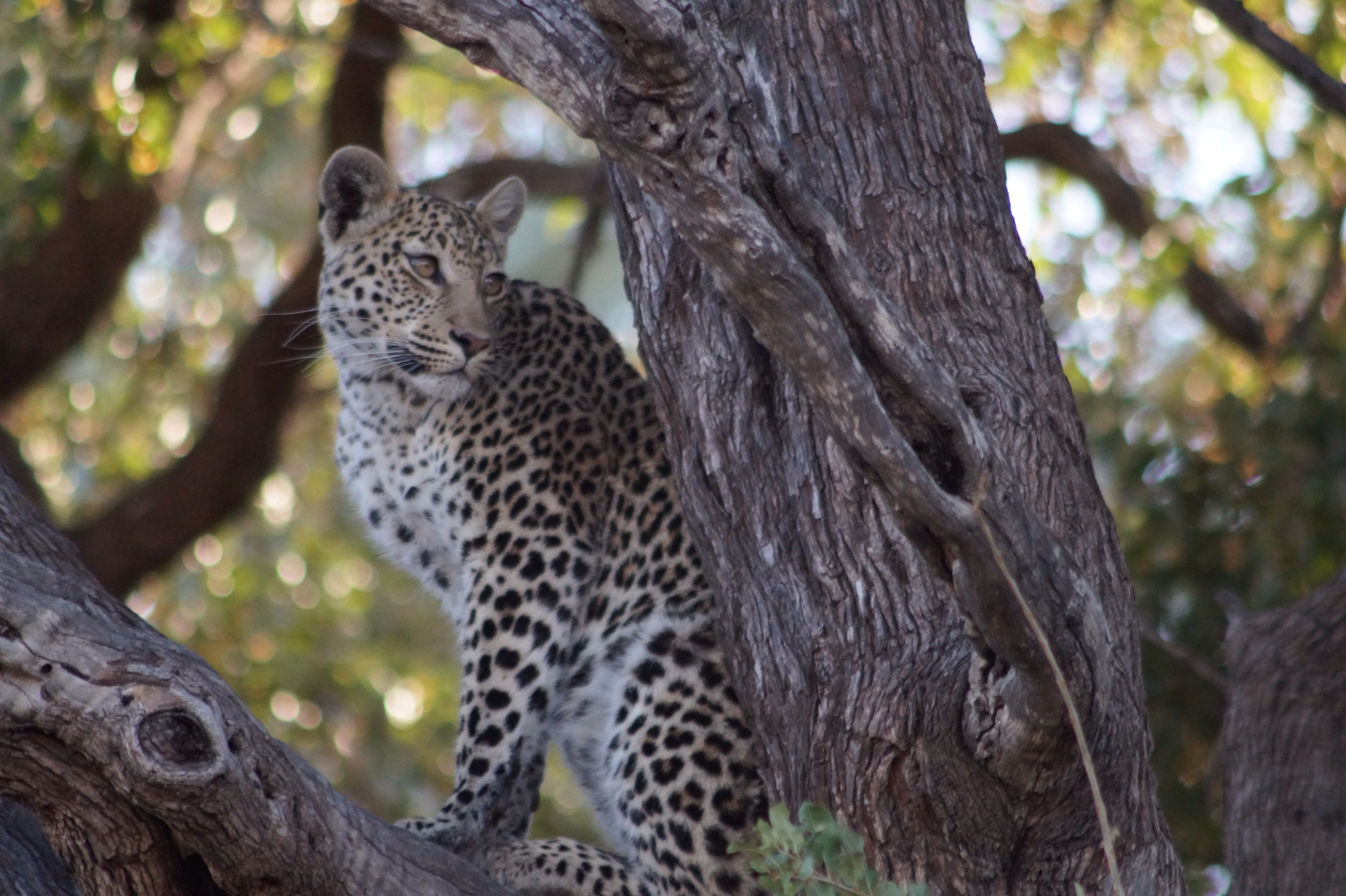
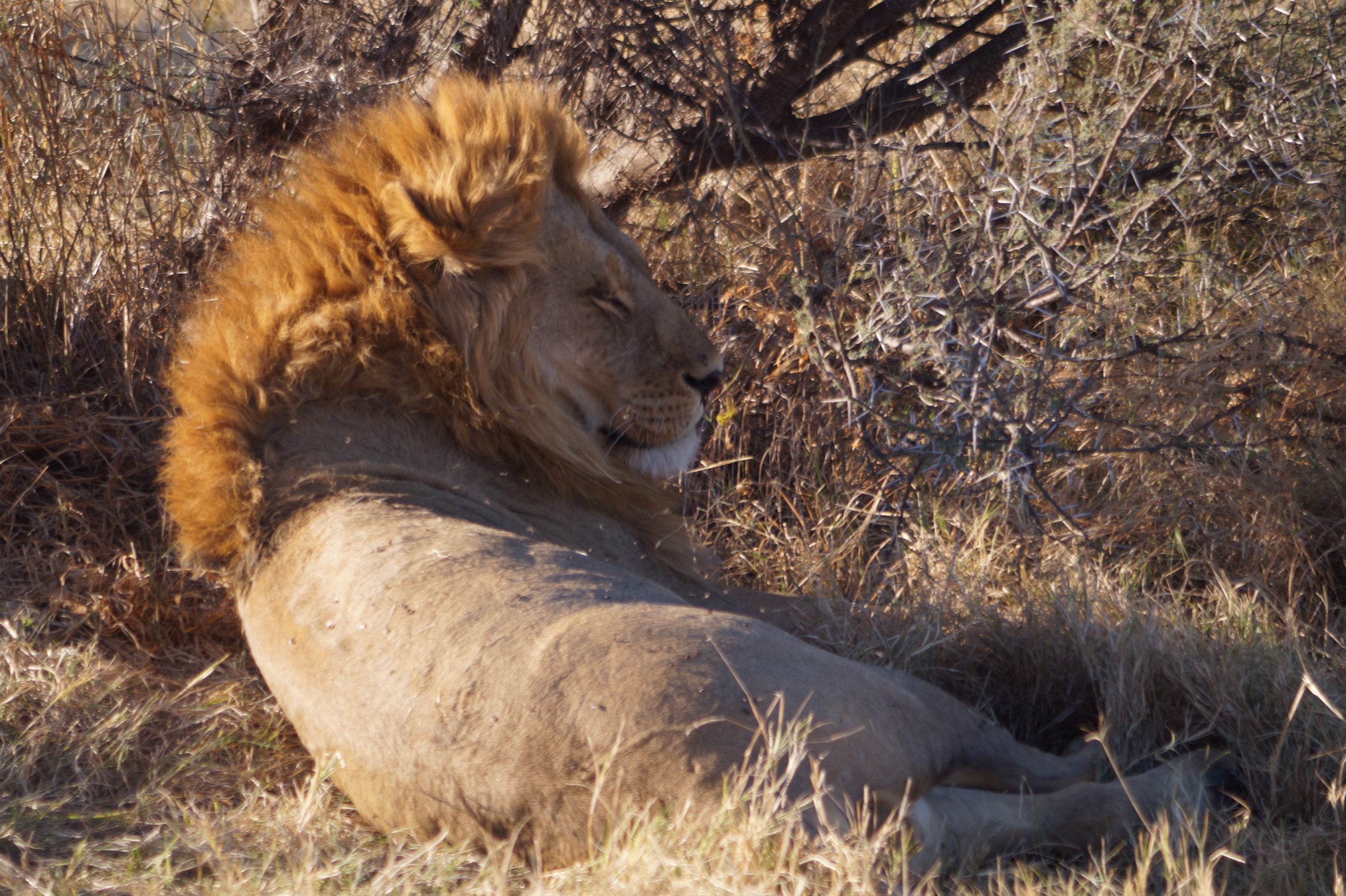
If that was not enough, a little later, we came across 2 lionesses. Again we were able to get so close to them. This was fantastic and we were now really been spoilt.


Over a wonderful dinner our anticipation was built up as the guide explained how the wild dogs had a den on the concession and that we would be heading that way in the morning. We were awoken at 5.30 for our early morning drive. With the excitement it was easy to get up. On the way to the wild dog den the guide got a radio call to say another vehicle had spotted a cheetah so he asked if we wanted to head over to see that first. Tough choice.

We were not to miss out on the Wild Dogs though. They had left their den but we found them moving nearby. Ten of them setting out to hunt. After following them for a while they could not find any game so they stopped for a drink before settling down to laze in the sun. We could not believe that we had seen lion, leopard, cheetah and wild dog all in the space of less than 24 hours and with such great views of the animals. Apologies if this blog is taken up with too many animal photos but they were amazing, special sightings.
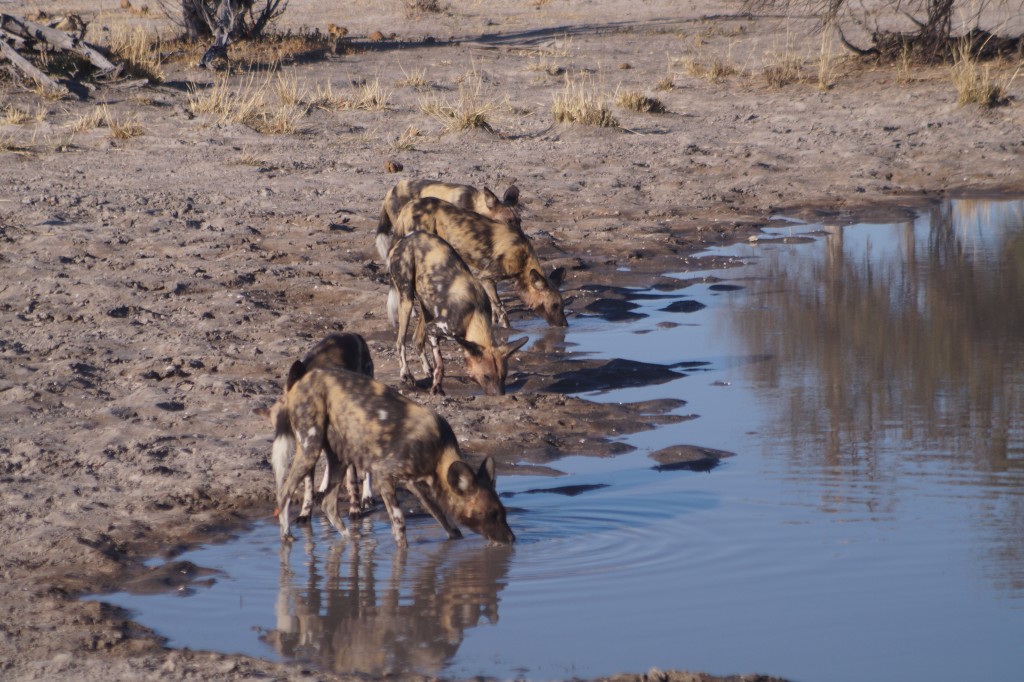
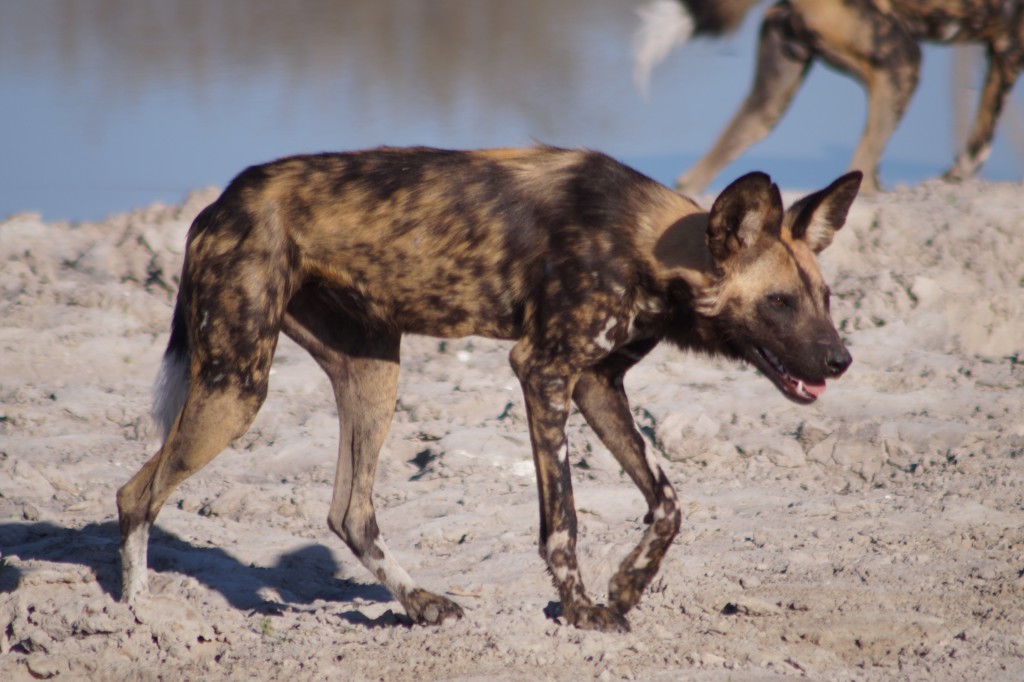
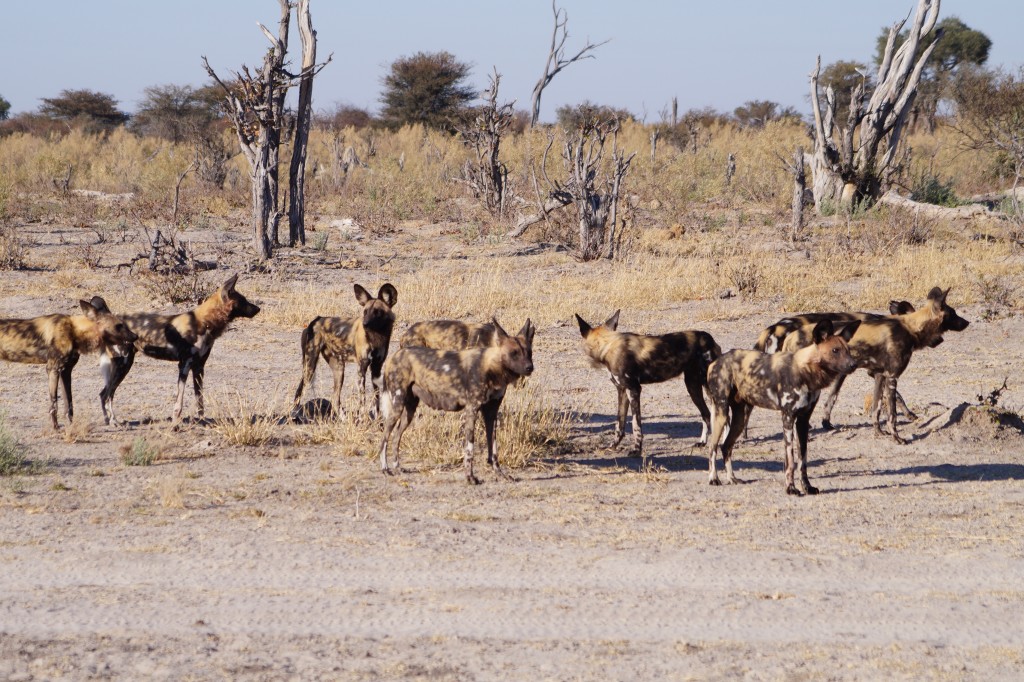
On the afternoon game drive the guide had a plan to visit a hyena den but the wildlife had other plans. On the way to the den the guide spotted a young male leopard in a tree. The leopard was active and looking around for animals. First it chased a squirrel around the tree and then it set off to hunt. We followed it and the guide drove the game viewing vehicle through some rough scrub. I was glad it was their vehicle. We watched as the leopard crouched. At first we could not see what it was hunting but then a warthog came into view. It looked too big for the leopard but the leopard did not think so. Amidst some squeals the warthog escaped and it was the leopard that was bruised nursing a small cut to its shoulder from the confrontation.
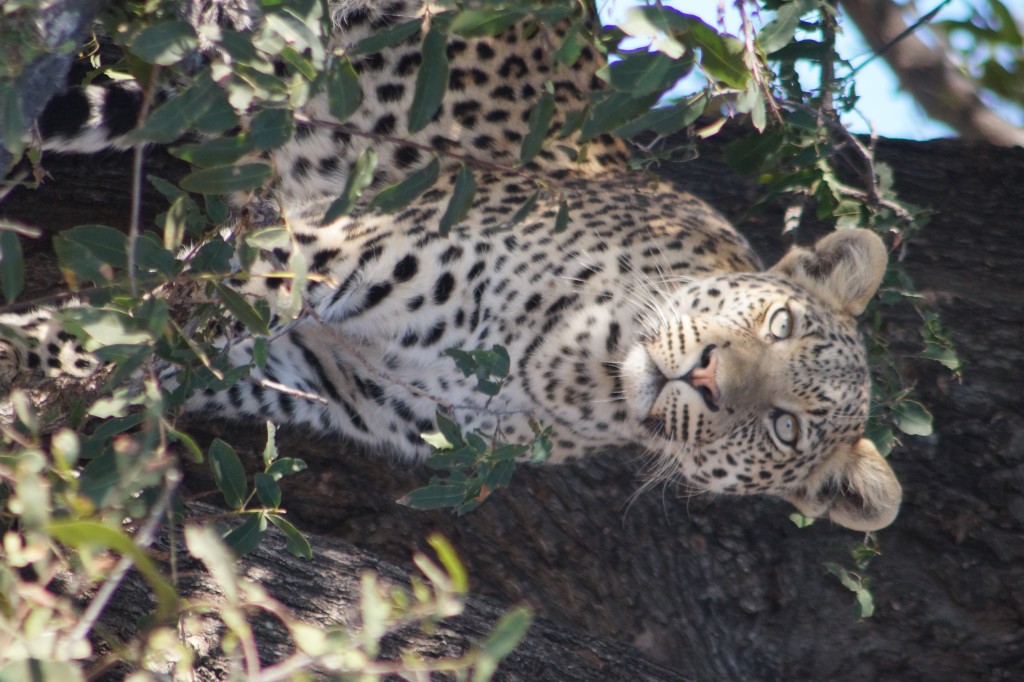
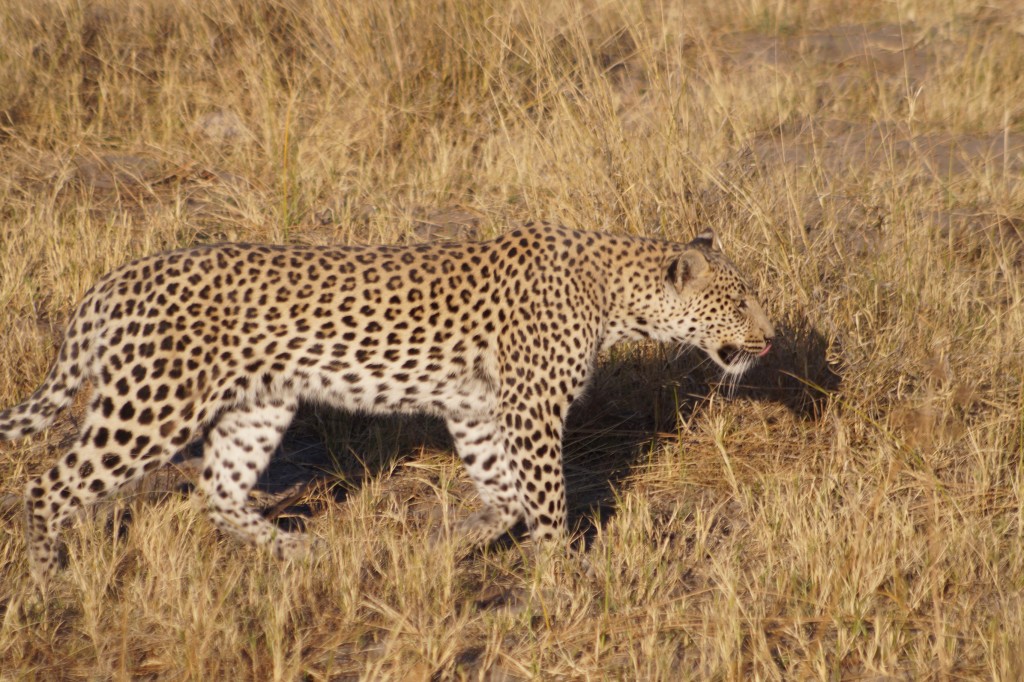
When we returned from our game drive we were given our options for the next day to connect with our lunchtime flight. We rather cheekily asked if our tent was going to be vacant the next night. After checking they said it was and we greedily asked if we could stay one more day. As the office in Maun was closed for the day they would need to check the next morning and whether flights could be rearranged.
So the next morning we were packed when we set off early on our morning game drive. Again it did not disappoint. First we followed a cheetah that was looking for game and then we came across two female and a male lion that were also out hunting. We followed them as they looked to find some game. Eventually they found something and a chase ensued. It was a civet (a small cat, rarely seen as it is nocturnal) and although the lions chased it they did not kill it as it is not something they would normally eat.
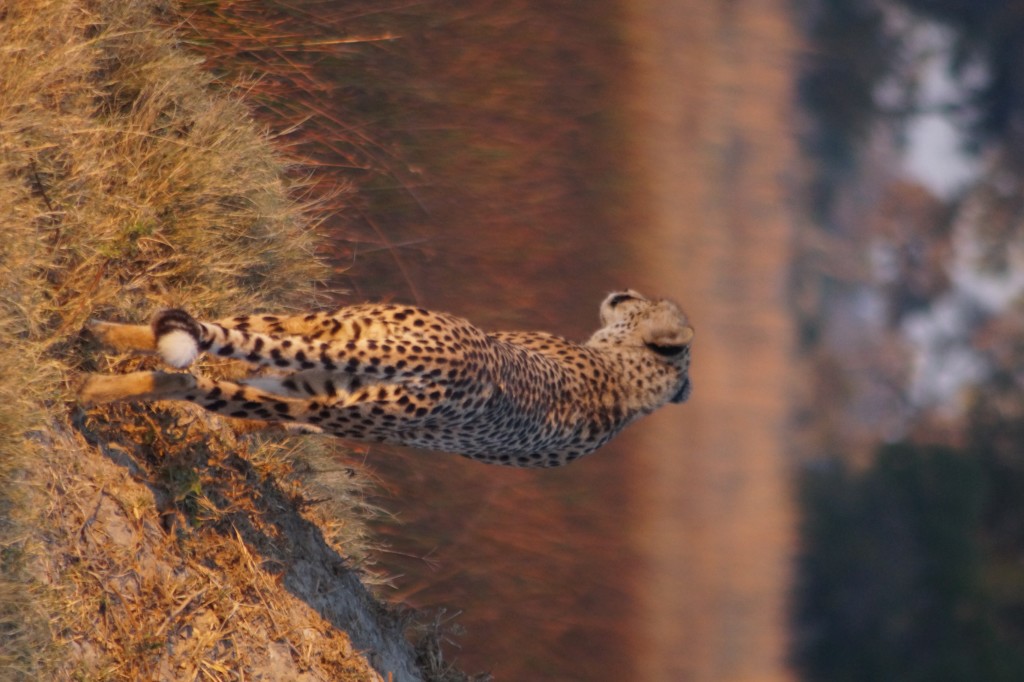
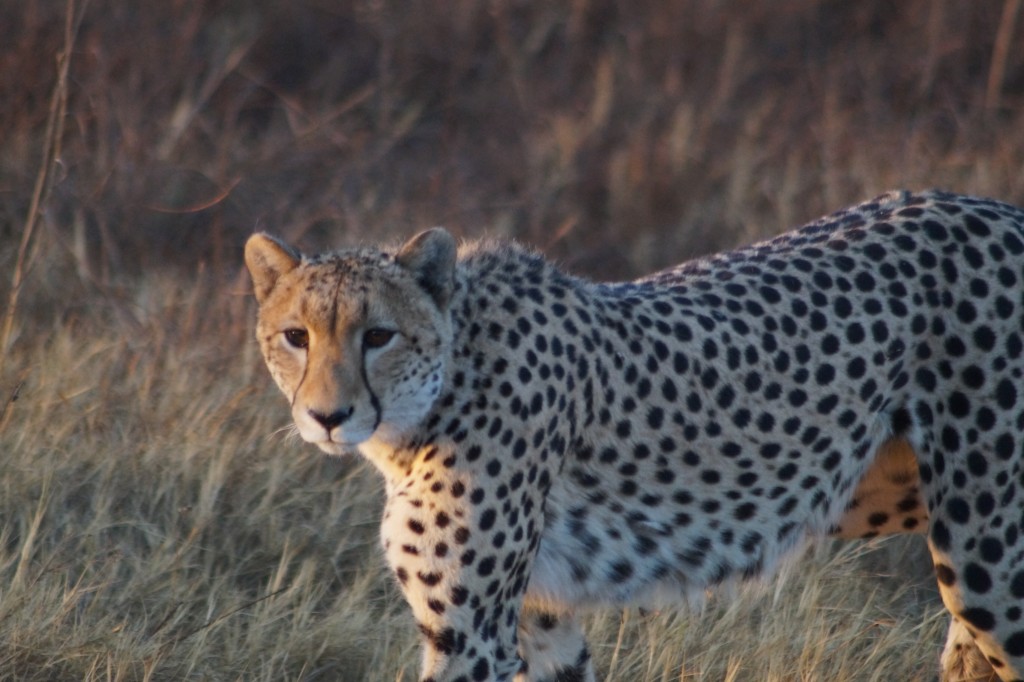
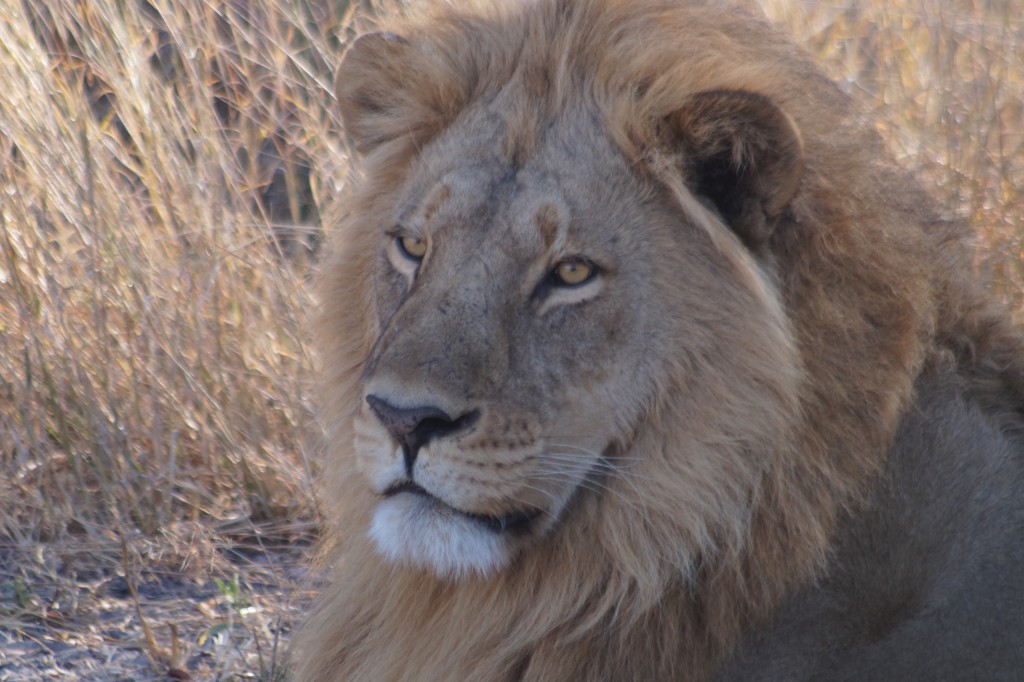
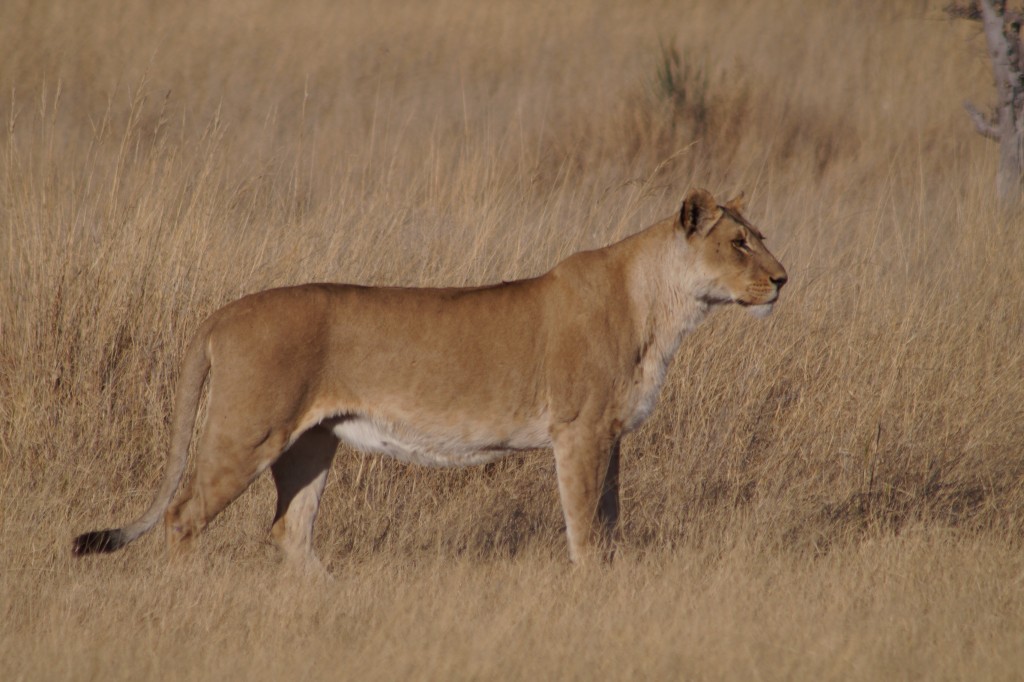
As we drank our morning tea enjoying the view, a call came through on the radio. We could stay an extra night if we wanted. I put it to a family vote. It was unanimous we were staying. We are getting spoilt and a little greedy. The wildlife viewing is so good it's going to be difficult to recreate this when we are back in the truck driving ourselves.
So we were wondering whether staying the extra night was going to be worth it. We needn't have worried. Our guide had a particular skill for finding leopards and he delivered again and found a beautiful leopard in a tree. For anyone who has been on safari you will know how difficult it is to see leopards and here we were watching our third leopard in only 3 days and such great sightings.
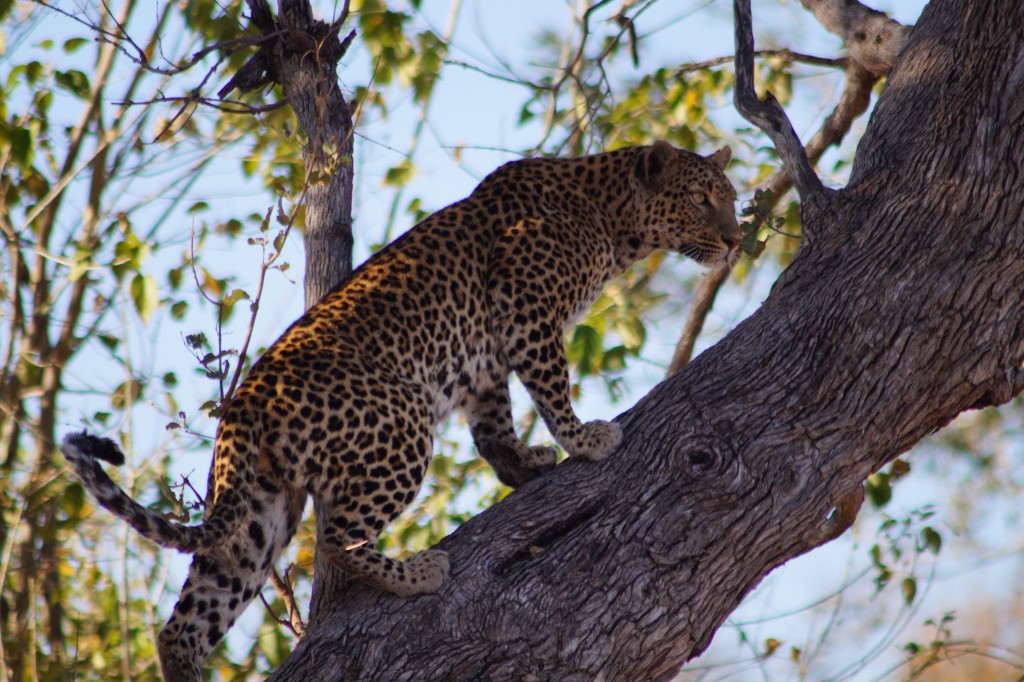
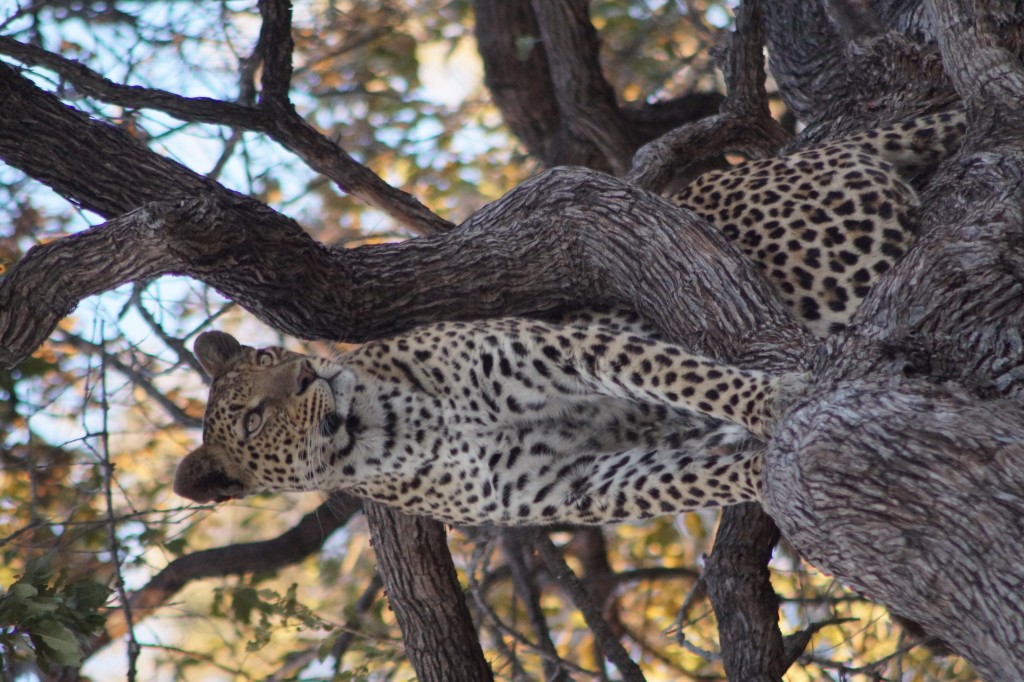
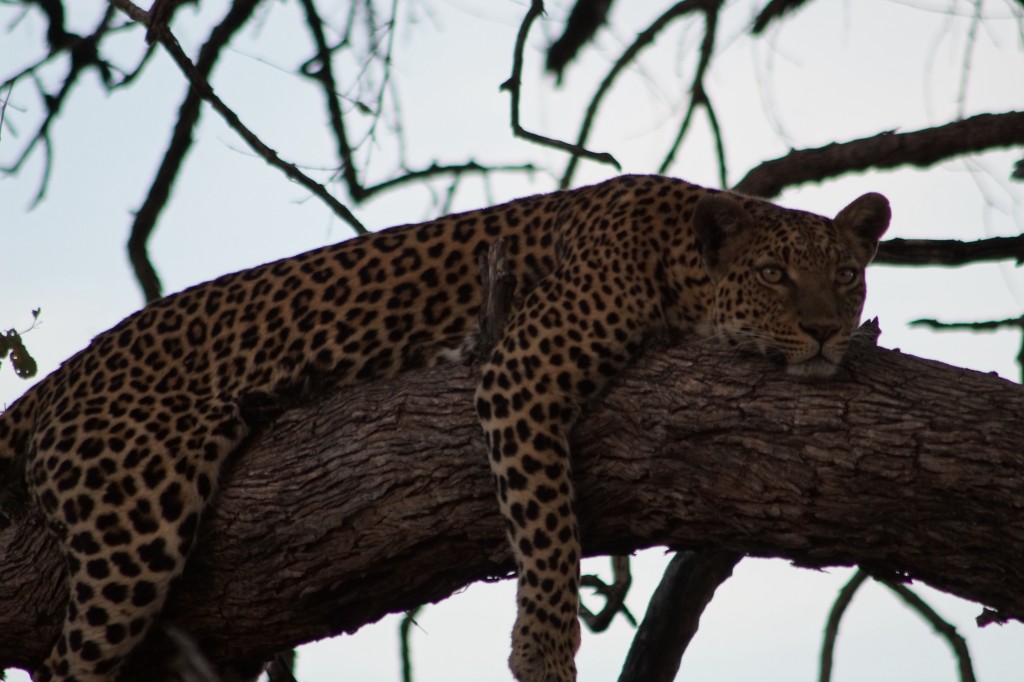
On our last morning we wanted to try and see the Wild dogs again. This time we found them on the den with 13 small puppies. Lucy loved them and decided she had to give each one a name. On the way back to camp the guide spotted vultures and followed them where we found a small kill that had been pretty much all eaten. He was sure it was lion and after searching found fresh footprints nearby which he followed. There right at the end were three lionesses under a bush. We were going to be late for our flight so could only stay a couple of minutes but it was a great end to an unbelievable place.
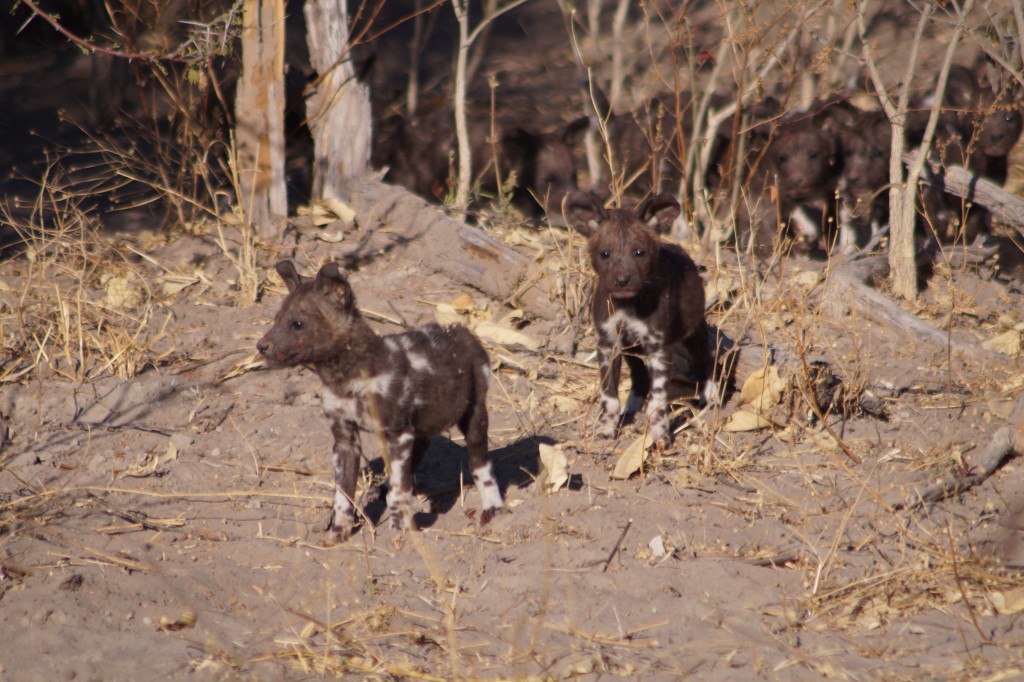
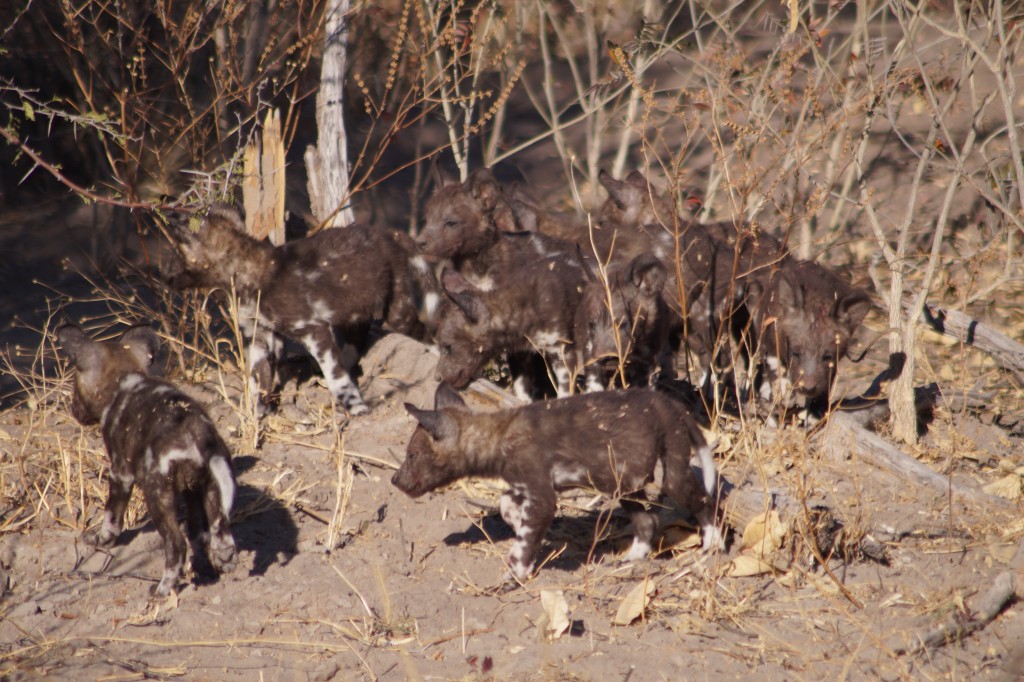
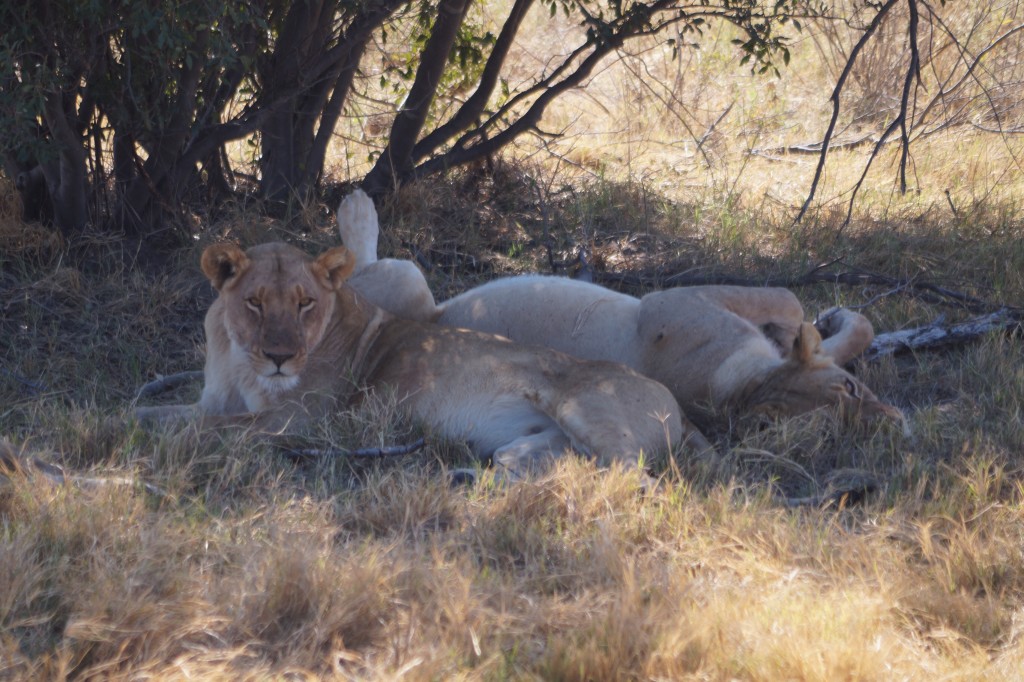
Due to us having to rearrange our flights back to Maun we needed to go on two separate planes. Gilly and Lucy went first on an eight seater and Alisha and I followed five minutes later in a six seater. As we winged our way over the Delta one final time I could reflect on what a fantastic time we had had. The lodges had been fantastic, the food and service superb and the guides so knowledgeable. But in the end it's the wildlife you come for and this had been outstanding. Botswana operates a low density high cost policy in its wildlife areas and it certainly means you get an exclusive experience. I felt how fortunate we were to have had such a wonderful "holiday" and to have really experienced the magic of the Delta. It was now time to return back to "normal life" in the truck.
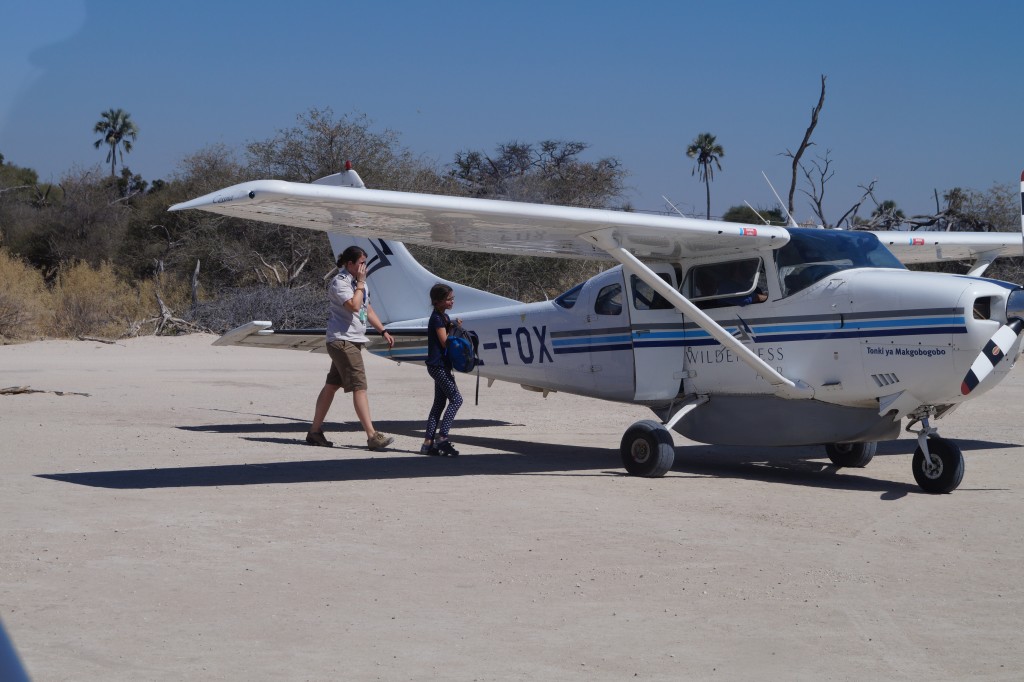
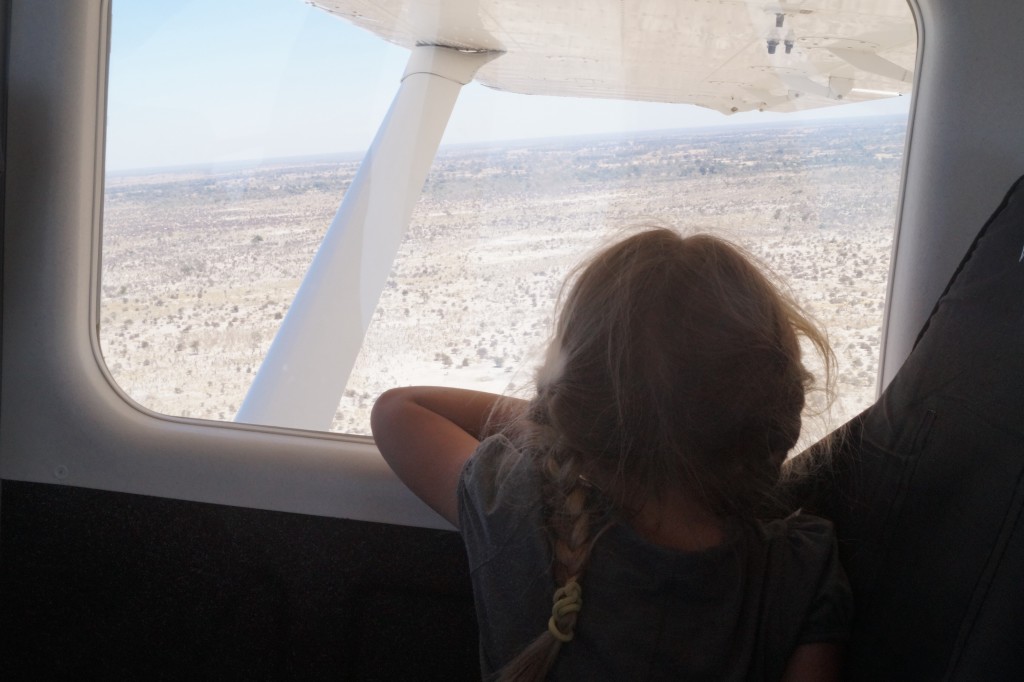
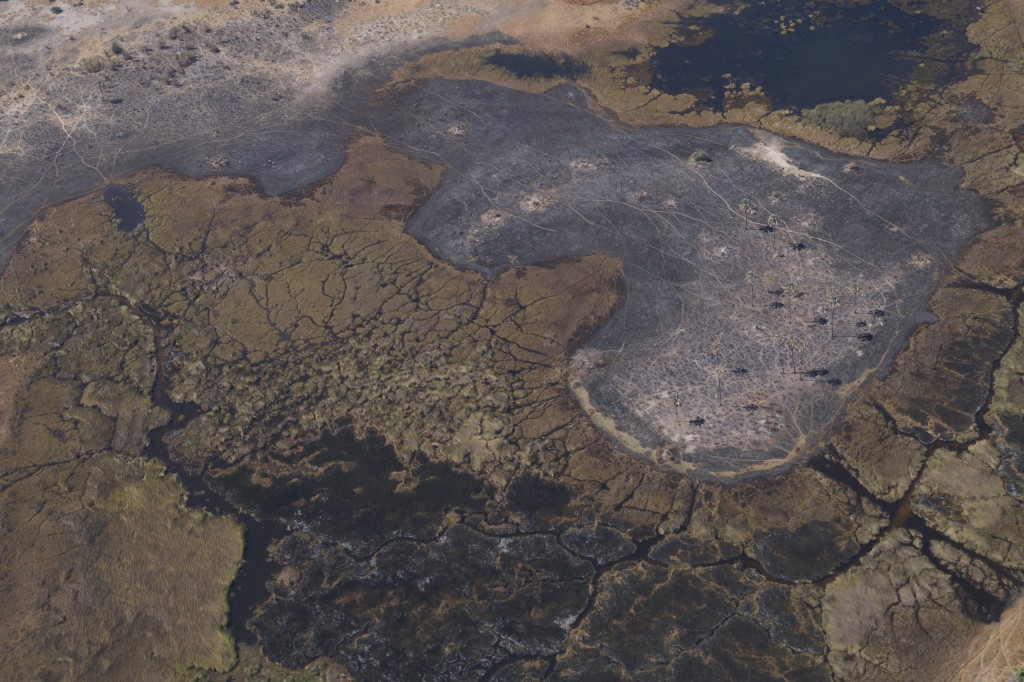

 Just two days before, at the end of a long day's drive we had arrived in the bustling safari town of Maun. Our first stop had been to a travel agent to see if we could get a last minute deal into the Okavango Delta. It was peak season so we were not very hopeful that there would be space available. The travel agent, Mmegi was more positive, she assured us there would be space but the bigger problem was finding a camp that would let Lucy do all the activities. It also was not going to be cheap.
I had been to the Delta before and wanted to recreate the experience I had had of been out in a Mokoro on the water and camping wild on an island for the night. As we have done lots of safari driving ourselves I felt experiencing the waterways was more important than game drives to really feel the essence of the Delta. Things had changed since I first went and everything had gone upmarket but later that evening we received an e mail from Mmegi that she had found a camp in a wet part of the Delta that could do all we wanted and would even include a night out "rough" camping on an island. We considered this overnight and decided it was ideal. However we could not resist the idea of going to one of the lovely upmarket camps to do some game drives especially with their knowledgeable guides and their ability to get close to the wildlife so asked Mmegi if she could add that too. Later that morning we walked into her office to find she had an offer waiting for us for at 2 very different camps in the Delta and we could leave the following day. Excitedly we booked and headed into Maun to sort various bits and pieces out.
The next day, less than 48 hours after arriving in Maun, we were boarding our 8 seater aircraft for our 20 minute flight into the Okavango Delta. The River Okavango originates in the highlands of Angola and flows down into Botswana where it disappears into the Kalahari sands without ever reaching the sea. The Delta it forms is protected and rich in wildlife. In the dry season the delta waters are at their highest and wildlife flocks to it from far and wide. The flight into the Delta has to be one of the most scenic flights there is, as you fly low over the Delta waters and can see the palm trees and islands together with scatterings of game.
Just two days before, at the end of a long day's drive we had arrived in the bustling safari town of Maun. Our first stop had been to a travel agent to see if we could get a last minute deal into the Okavango Delta. It was peak season so we were not very hopeful that there would be space available. The travel agent, Mmegi was more positive, she assured us there would be space but the bigger problem was finding a camp that would let Lucy do all the activities. It also was not going to be cheap.
I had been to the Delta before and wanted to recreate the experience I had had of been out in a Mokoro on the water and camping wild on an island for the night. As we have done lots of safari driving ourselves I felt experiencing the waterways was more important than game drives to really feel the essence of the Delta. Things had changed since I first went and everything had gone upmarket but later that evening we received an e mail from Mmegi that she had found a camp in a wet part of the Delta that could do all we wanted and would even include a night out "rough" camping on an island. We considered this overnight and decided it was ideal. However we could not resist the idea of going to one of the lovely upmarket camps to do some game drives especially with their knowledgeable guides and their ability to get close to the wildlife so asked Mmegi if she could add that too. Later that morning we walked into her office to find she had an offer waiting for us for at 2 very different camps in the Delta and we could leave the following day. Excitedly we booked and headed into Maun to sort various bits and pieces out.
The next day, less than 48 hours after arriving in Maun, we were boarding our 8 seater aircraft for our 20 minute flight into the Okavango Delta. The River Okavango originates in the highlands of Angola and flows down into Botswana where it disappears into the Kalahari sands without ever reaching the sea. The Delta it forms is protected and rich in wildlife. In the dry season the delta waters are at their highest and wildlife flocks to it from far and wide. The flight into the Delta has to be one of the most scenic flights there is, as you fly low over the Delta waters and can see the palm trees and islands together with scatterings of game.

 We landed at the airstrip and were transferred by Mokoro Canoe to Delta Camp. This was not exactly roughing it. We had a reed family chalet with ensuite bathroom. Mind you it was a fair walk from the main bar and dining area and we frequently encountered elephants on the path while heading to our room. Our time at Delta camp was spent doing rides in the Mokoro canoes and talking walks on the nearby islands. This was not in fenced areas but with the rest of the animals. Our guides were well versed in animal behaviour and assured us it was all very safe. They did not carry guns and said if we did encounter any of the "big 5" (elephant, rhino, lion, leopard or buffalo) at close quarters while out walking we had to stand still and on no account run. Normally we love to see the big cats but this time Gilly was really hoping we would not come across them. We did however find fairly fresh lion prints and she was a bit perturbed when our guides started following them!
We landed at the airstrip and were transferred by Mokoro Canoe to Delta Camp. This was not exactly roughing it. We had a reed family chalet with ensuite bathroom. Mind you it was a fair walk from the main bar and dining area and we frequently encountered elephants on the path while heading to our room. Our time at Delta camp was spent doing rides in the Mokoro canoes and talking walks on the nearby islands. This was not in fenced areas but with the rest of the animals. Our guides were well versed in animal behaviour and assured us it was all very safe. They did not carry guns and said if we did encounter any of the "big 5" (elephant, rhino, lion, leopard or buffalo) at close quarters while out walking we had to stand still and on no account run. Normally we love to see the big cats but this time Gilly was really hoping we would not come across them. We did however find fairly fresh lion prints and she was a bit perturbed when our guides started following them!



 We did though see plenty of other game; giraffe, Impala. Zebra, red lechwe, warthog, giraffe etc and I was surprised at how close we could get to the animals on foot. Much closer than when I had visited 20 odd years ago. The guides said that with the area been protected the wildlife is now much more used to seeing humans on foot and does not perceive them to be a threat. The photos below may not be as good as some of the ones we have posted before but they were taken while we were on foot.
We did though see plenty of other game; giraffe, Impala. Zebra, red lechwe, warthog, giraffe etc and I was surprised at how close we could get to the animals on foot. Much closer than when I had visited 20 odd years ago. The guides said that with the area been protected the wildlife is now much more used to seeing humans on foot and does not perceive them to be a threat. The photos below may not be as good as some of the ones we have posted before but they were taken while we were on foot.





 On our middle night we went off to camp "rough" on an island by ourselves. I say by ourselves, there was actually the four of us plus 2 guides, a cook and a waiter. And it was hardly roughing it as the tents had already been set up with mattresses and duvets and a nice table to eat at. Still we had to manage with a bush shower and toilet. We spent a wonderful 24 hours at the camp. It felt like we were really out in the wilds which we were and it was so peaceful watching the water flow by and observing the wildlife. We even did a spot of fishing and caught enough for tea.
On our middle night we went off to camp "rough" on an island by ourselves. I say by ourselves, there was actually the four of us plus 2 guides, a cook and a waiter. And it was hardly roughing it as the tents had already been set up with mattresses and duvets and a nice table to eat at. Still we had to manage with a bush shower and toilet. We spent a wonderful 24 hours at the camp. It felt like we were really out in the wilds which we were and it was so peaceful watching the water flow by and observing the wildlife. We even did a spot of fishing and caught enough for tea.



 Sleeping in the tent means you can hear all the night noise of the bush. Whilst Alisha and Lucy slept as normal, Gilly and I were much lighter sleepers than usual. We could hear a lion roaring but far away and then at about two in the morning we heard a loud swishing sound followed by heavy things falling from the sky. This was elephants rocking the palm trees to get the palm nuts to fall to the ground. It was pretty loud as the elephants were less than 50 metres away.
We thoroughly enjoyed our time at Delta Camp. The staff and guides were from the local village just outside the Delta and we talked to them a lot about their lives and how the Delta has changed. They really knew their stuff. One afternoon we went out for a walk to look for large owls. I will never know how they were able to spot them in the trees from so far away.
Sleeping in the tent means you can hear all the night noise of the bush. Whilst Alisha and Lucy slept as normal, Gilly and I were much lighter sleepers than usual. We could hear a lion roaring but far away and then at about two in the morning we heard a loud swishing sound followed by heavy things falling from the sky. This was elephants rocking the palm trees to get the palm nuts to fall to the ground. It was pretty loud as the elephants were less than 50 metres away.
We thoroughly enjoyed our time at Delta Camp. The staff and guides were from the local village just outside the Delta and we talked to them a lot about their lives and how the Delta has changed. They really knew their stuff. One afternoon we went out for a walk to look for large owls. I will never know how they were able to spot them in the trees from so far away.

 On our last morning we arrived at the dining area for morning tea to be told that the island's resident leopard had been in the kitchen overnight. In fact it had slept on one of the sofas and had then scent marked all over it.
On our last morning we arrived at the dining area for morning tea to be told that the island's resident leopard had been in the kitchen overnight. In fact it had slept on one of the sofas and had then scent marked all over it.

 It was time to leave though and we caught another short flight over the Delta to our next camp, Chitabe Letiba. If we thought our last camp was pretty fancy, this one took it up to a whole new level. We had the family tent which was actually 2 very large tents joined together with outdoor decking overlooking a small wetland where elephants came down to drink. The rooms themselves were massive and had all the amenities of a 5 star hotel plus an outside shower. Gilly and I both looked at each other and said we could really get used to this.
It was time to leave though and we caught another short flight over the Delta to our next camp, Chitabe Letiba. If we thought our last camp was pretty fancy, this one took it up to a whole new level. We had the family tent which was actually 2 very large tents joined together with outdoor decking overlooking a small wetland where elephants came down to drink. The rooms themselves were massive and had all the amenities of a 5 star hotel plus an outside shower. Gilly and I both looked at each other and said we could really get used to this.

 This camp was in a drier area of the Delta so the focus was on game drives in open sided Land Rovers. It was going to be good to not have to worry about the driving or scratching the vehicle on trees for a change. Plus driving on the roads in these private concessions is optional for the guides. As there are so few vehicles they are allowed to drive off-road so can get really close to the animals. On our drive in from the airstrip the animals were completely unperturbed and the impala would barely move off the road to allow the vehicle through.
This camp was in a drier area of the Delta so the focus was on game drives in open sided Land Rovers. It was going to be good to not have to worry about the driving or scratching the vehicle on trees for a change. Plus driving on the roads in these private concessions is optional for the guides. As there are so few vehicles they are allowed to drive off-road so can get really close to the animals. On our drive in from the airstrip the animals were completely unperturbed and the impala would barely move off the road to allow the vehicle through.

 We met our guide, OD who asked Lucy if there was anything in particular she wanted to see. She said "Wild Dog", one of the rarest large carnivores in the world. He said they had them on the concession but as they were usually a little further away we would leave them to the following morning. Not to worry, he said I am sure we will find something equally interesting. And he was not wrong! After a short drive he pulled off the road and stopped and quietly said, "Do you see it?". "Yes," I said "A big male lion, just in front". "Oh" he said "I had not seen him, I was looking in the tree". We looked in the tree where a female leopard was lying on a branch. The lion and the leopard had clearly seen each other though as they were busy staring at each other. The leopard though was pretty safe up the tree.
We met our guide, OD who asked Lucy if there was anything in particular she wanted to see. She said "Wild Dog", one of the rarest large carnivores in the world. He said they had them on the concession but as they were usually a little further away we would leave them to the following morning. Not to worry, he said I am sure we will find something equally interesting. And he was not wrong! After a short drive he pulled off the road and stopped and quietly said, "Do you see it?". "Yes," I said "A big male lion, just in front". "Oh" he said "I had not seen him, I was looking in the tree". We looked in the tree where a female leopard was lying on a branch. The lion and the leopard had clearly seen each other though as they were busy staring at each other. The leopard though was pretty safe up the tree.


 If that was not enough, a little later, we came across 2 lionesses. Again we were able to get so close to them. This was fantastic and we were now really been spoilt.
If that was not enough, a little later, we came across 2 lionesses. Again we were able to get so close to them. This was fantastic and we were now really been spoilt.

 Over a wonderful dinner our anticipation was built up as the guide explained how the wild dogs had a den on the concession and that we would be heading that way in the morning. We were awoken at 5.30 for our early morning drive. With the excitement it was easy to get up. On the way to the wild dog den the guide got a radio call to say another vehicle had spotted a cheetah so he asked if we wanted to head over to see that first. Tough choice.
Over a wonderful dinner our anticipation was built up as the guide explained how the wild dogs had a den on the concession and that we would be heading that way in the morning. We were awoken at 5.30 for our early morning drive. With the excitement it was easy to get up. On the way to the wild dog den the guide got a radio call to say another vehicle had spotted a cheetah so he asked if we wanted to head over to see that first. Tough choice.
 We were not to miss out on the Wild Dogs though. They had left their den but we found them moving nearby. Ten of them setting out to hunt. After following them for a while they could not find any game so they stopped for a drink before settling down to laze in the sun. We could not believe that we had seen lion, leopard, cheetah and wild dog all in the space of less than 24 hours and with such great views of the animals. Apologies if this blog is taken up with too many animal photos but they were amazing, special sightings.
We were not to miss out on the Wild Dogs though. They had left their den but we found them moving nearby. Ten of them setting out to hunt. After following them for a while they could not find any game so they stopped for a drink before settling down to laze in the sun. We could not believe that we had seen lion, leopard, cheetah and wild dog all in the space of less than 24 hours and with such great views of the animals. Apologies if this blog is taken up with too many animal photos but they were amazing, special sightings.


 On the afternoon game drive the guide had a plan to visit a hyena den but the wildlife had other plans. On the way to the den the guide spotted a young male leopard in a tree. The leopard was active and looking around for animals. First it chased a squirrel around the tree and then it set off to hunt. We followed it and the guide drove the game viewing vehicle through some rough scrub. I was glad it was their vehicle. We watched as the leopard crouched. At first we could not see what it was hunting but then a warthog came into view. It looked too big for the leopard but the leopard did not think so. Amidst some squeals the warthog escaped and it was the leopard that was bruised nursing a small cut to its shoulder from the confrontation.
On the afternoon game drive the guide had a plan to visit a hyena den but the wildlife had other plans. On the way to the den the guide spotted a young male leopard in a tree. The leopard was active and looking around for animals. First it chased a squirrel around the tree and then it set off to hunt. We followed it and the guide drove the game viewing vehicle through some rough scrub. I was glad it was their vehicle. We watched as the leopard crouched. At first we could not see what it was hunting but then a warthog came into view. It looked too big for the leopard but the leopard did not think so. Amidst some squeals the warthog escaped and it was the leopard that was bruised nursing a small cut to its shoulder from the confrontation.

 When we returned from our game drive we were given our options for the next day to connect with our lunchtime flight. We rather cheekily asked if our tent was going to be vacant the next night. After checking they said it was and we greedily asked if we could stay one more day. As the office in Maun was closed for the day they would need to check the next morning and whether flights could be rearranged.
So the next morning we were packed when we set off early on our morning game drive. Again it did not disappoint. First we followed a cheetah that was looking for game and then we came across two female and a male lion that were also out hunting. We followed them as they looked to find some game. Eventually they found something and a chase ensued. It was a civet (a small cat, rarely seen as it is nocturnal) and although the lions chased it they did not kill it as it is not something they would normally eat.
When we returned from our game drive we were given our options for the next day to connect with our lunchtime flight. We rather cheekily asked if our tent was going to be vacant the next night. After checking they said it was and we greedily asked if we could stay one more day. As the office in Maun was closed for the day they would need to check the next morning and whether flights could be rearranged.
So the next morning we were packed when we set off early on our morning game drive. Again it did not disappoint. First we followed a cheetah that was looking for game and then we came across two female and a male lion that were also out hunting. We followed them as they looked to find some game. Eventually they found something and a chase ensued. It was a civet (a small cat, rarely seen as it is nocturnal) and although the lions chased it they did not kill it as it is not something they would normally eat.



 As we drank our morning tea enjoying the view, a call came through on the radio. We could stay an extra night if we wanted. I put it to a family vote. It was unanimous we were staying. We are getting spoilt and a little greedy. The wildlife viewing is so good it's going to be difficult to recreate this when we are back in the truck driving ourselves.
So we were wondering whether staying the extra night was going to be worth it. We needn't have worried. Our guide had a particular skill for finding leopards and he delivered again and found a beautiful leopard in a tree. For anyone who has been on safari you will know how difficult it is to see leopards and here we were watching our third leopard in only 3 days and such great sightings.
As we drank our morning tea enjoying the view, a call came through on the radio. We could stay an extra night if we wanted. I put it to a family vote. It was unanimous we were staying. We are getting spoilt and a little greedy. The wildlife viewing is so good it's going to be difficult to recreate this when we are back in the truck driving ourselves.
So we were wondering whether staying the extra night was going to be worth it. We needn't have worried. Our guide had a particular skill for finding leopards and he delivered again and found a beautiful leopard in a tree. For anyone who has been on safari you will know how difficult it is to see leopards and here we were watching our third leopard in only 3 days and such great sightings.


 On our last morning we wanted to try and see the Wild dogs again. This time we found them on the den with 13 small puppies. Lucy loved them and decided she had to give each one a name. On the way back to camp the guide spotted vultures and followed them where we found a small kill that had been pretty much all eaten. He was sure it was lion and after searching found fresh footprints nearby which he followed. There right at the end were three lionesses under a bush. We were going to be late for our flight so could only stay a couple of minutes but it was a great end to an unbelievable place.
On our last morning we wanted to try and see the Wild dogs again. This time we found them on the den with 13 small puppies. Lucy loved them and decided she had to give each one a name. On the way back to camp the guide spotted vultures and followed them where we found a small kill that had been pretty much all eaten. He was sure it was lion and after searching found fresh footprints nearby which he followed. There right at the end were three lionesses under a bush. We were going to be late for our flight so could only stay a couple of minutes but it was a great end to an unbelievable place.


 Due to us having to rearrange our flights back to Maun we needed to go on two separate planes. Gilly and Lucy went first on an eight seater and Alisha and I followed five minutes later in a six seater. As we winged our way over the Delta one final time I could reflect on what a fantastic time we had had. The lodges had been fantastic, the food and service superb and the guides so knowledgeable. But in the end it's the wildlife you come for and this had been outstanding. Botswana operates a low density high cost policy in its wildlife areas and it certainly means you get an exclusive experience. I felt how fortunate we were to have had such a wonderful "holiday" and to have really experienced the magic of the Delta. It was now time to return back to "normal life" in the truck.
Due to us having to rearrange our flights back to Maun we needed to go on two separate planes. Gilly and Lucy went first on an eight seater and Alisha and I followed five minutes later in a six seater. As we winged our way over the Delta one final time I could reflect on what a fantastic time we had had. The lodges had been fantastic, the food and service superb and the guides so knowledgeable. But in the end it's the wildlife you come for and this had been outstanding. Botswana operates a low density high cost policy in its wildlife areas and it certainly means you get an exclusive experience. I felt how fortunate we were to have had such a wonderful "holiday" and to have really experienced the magic of the Delta. It was now time to return back to "normal life" in the truck.





